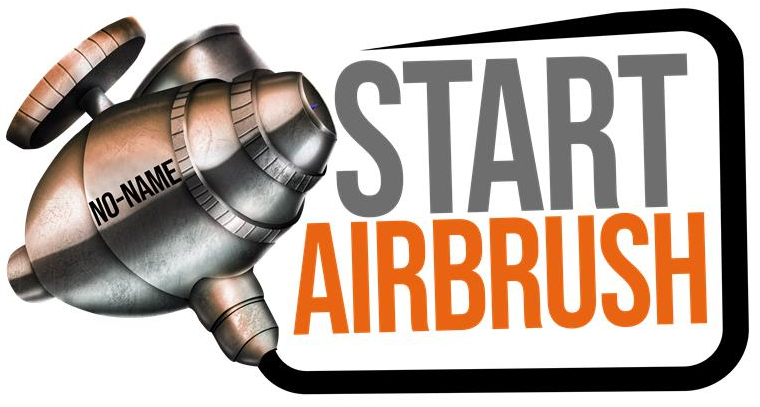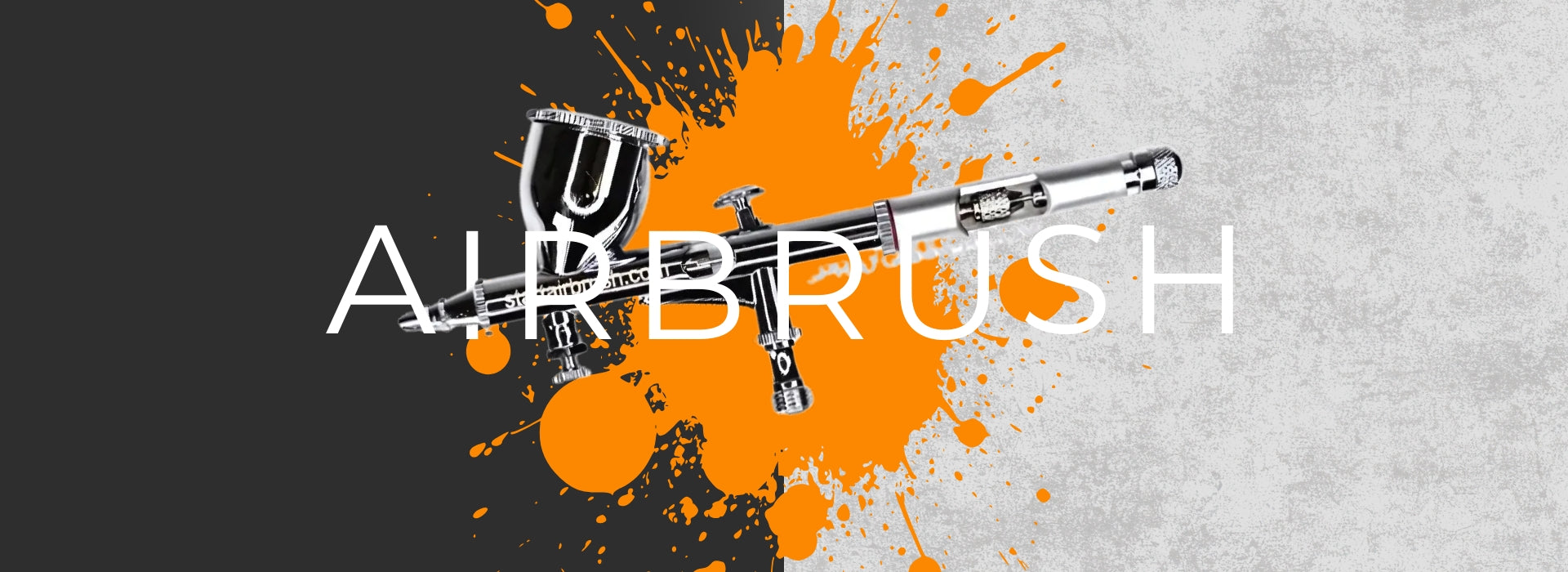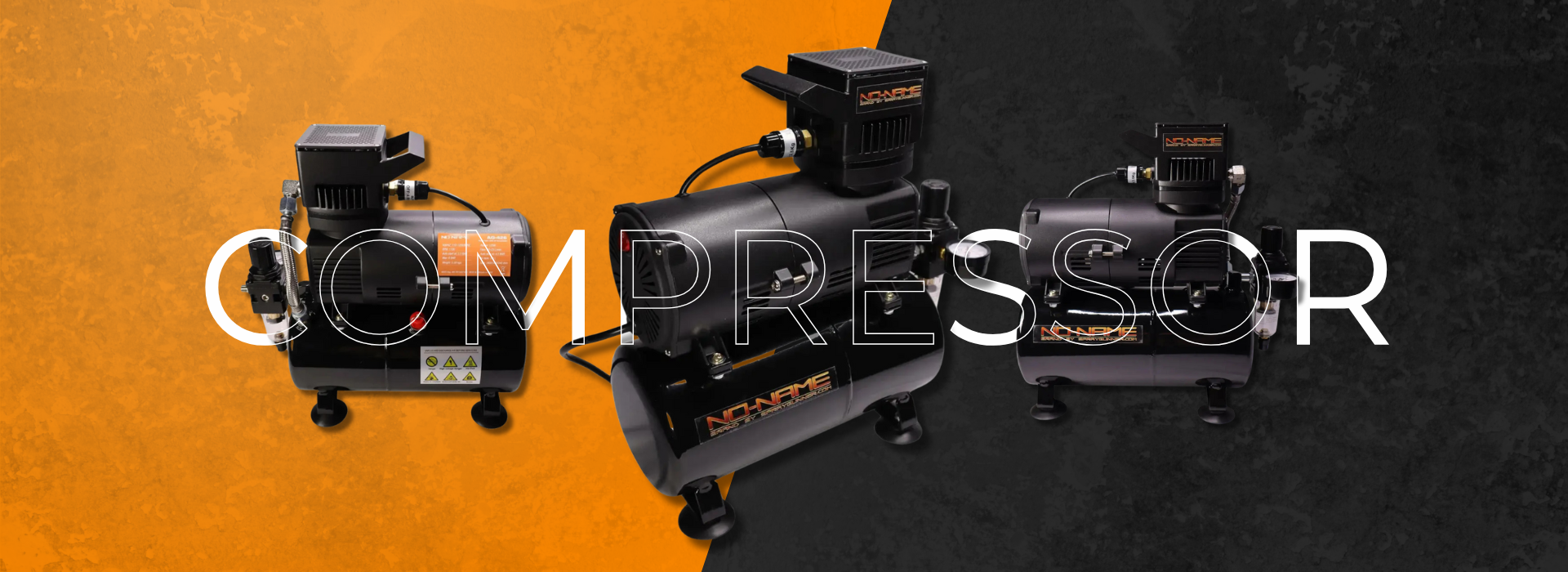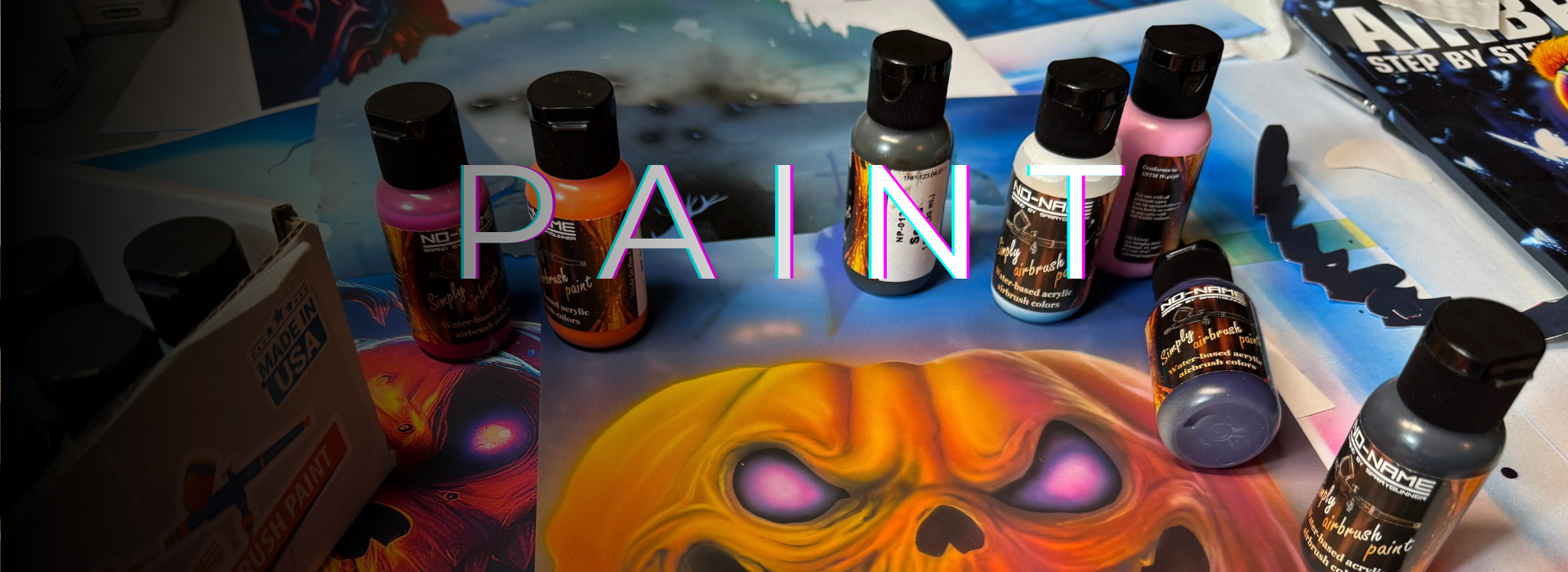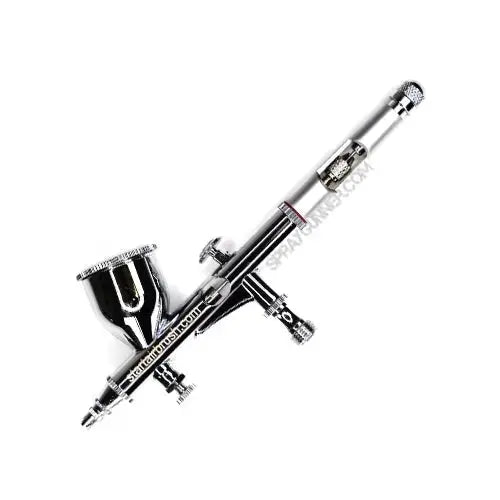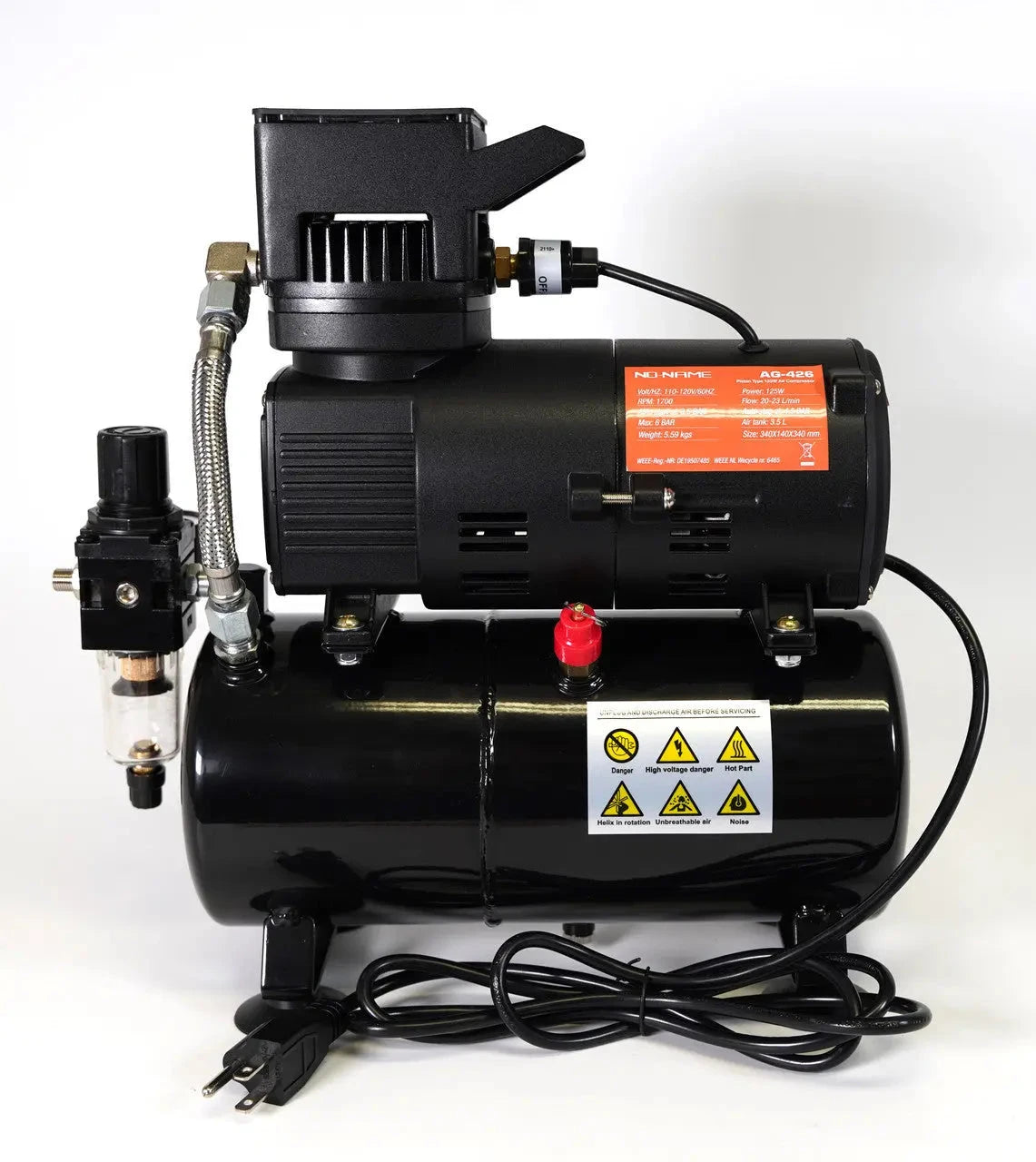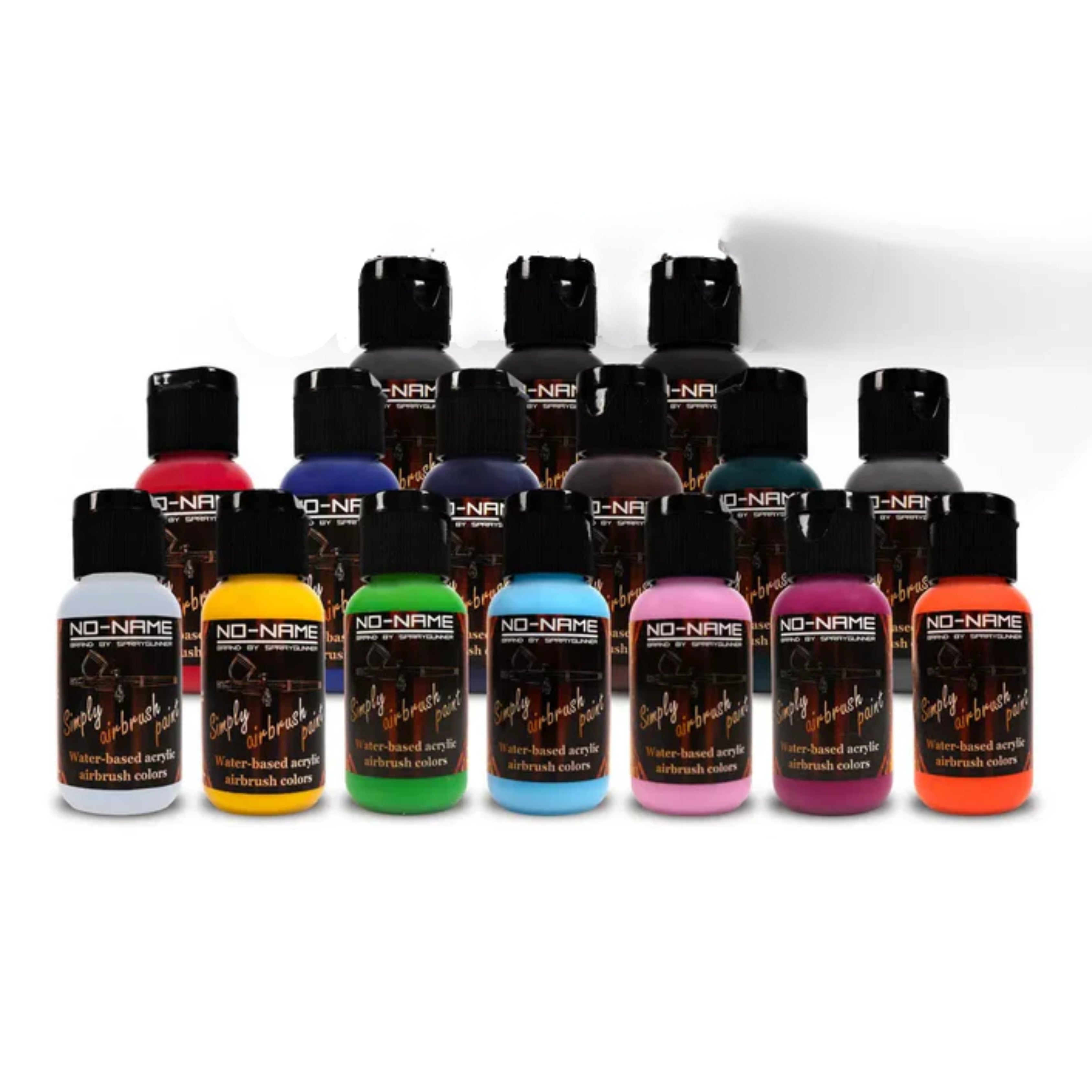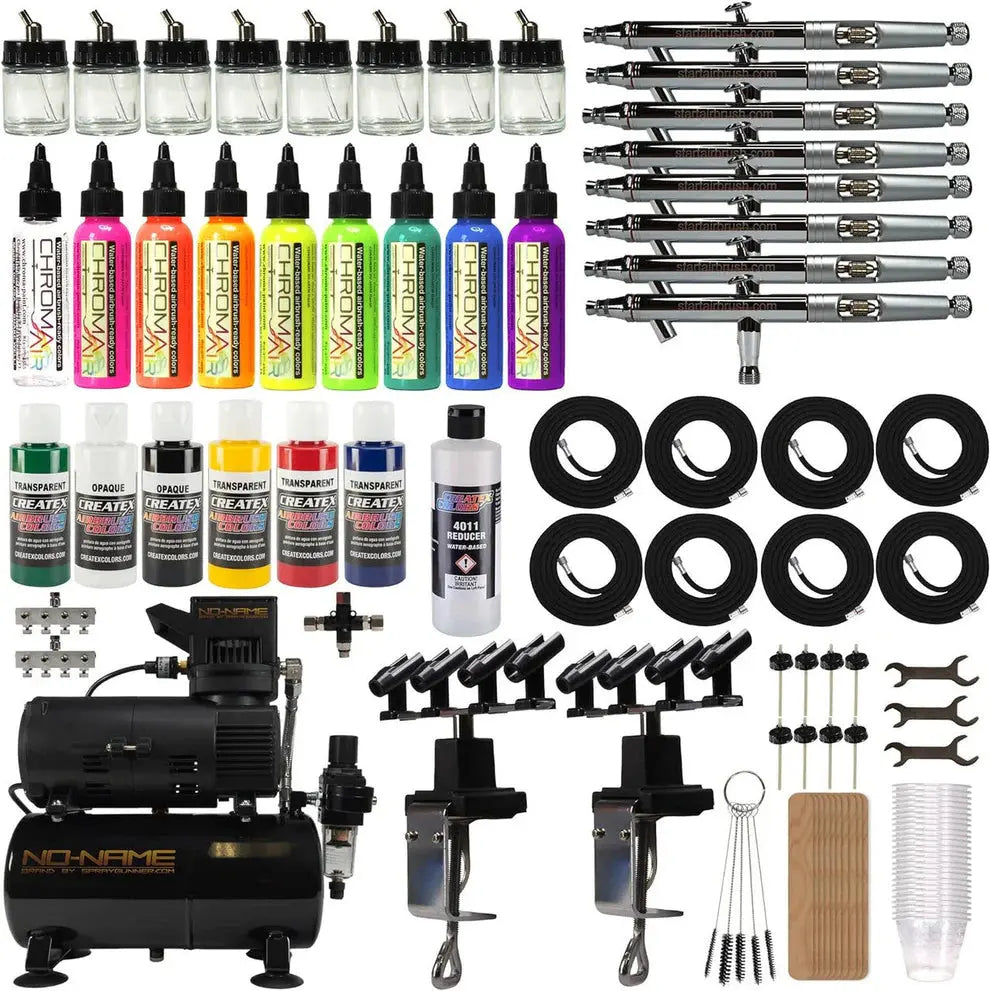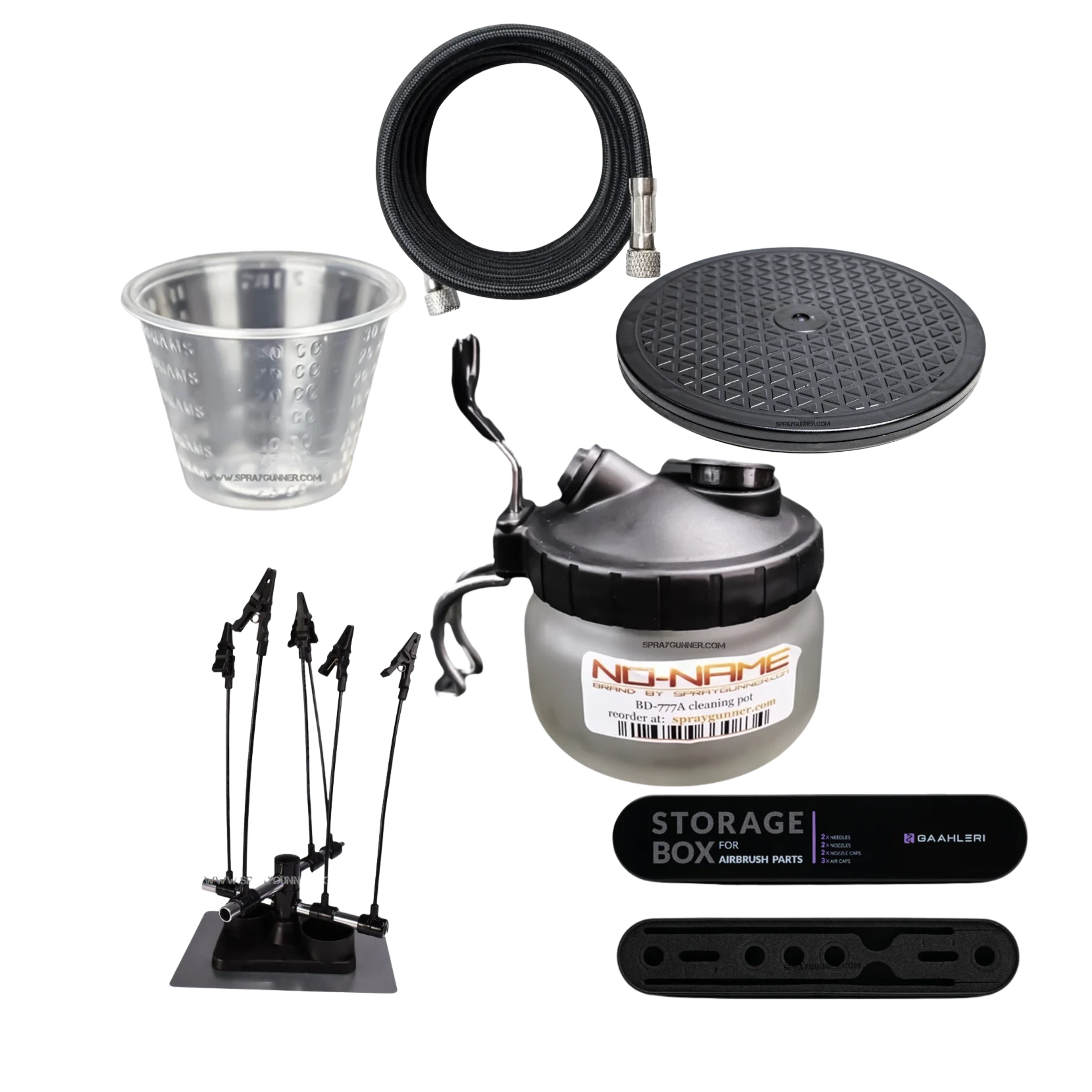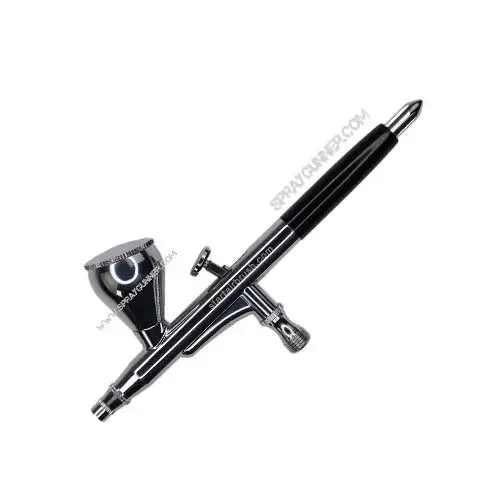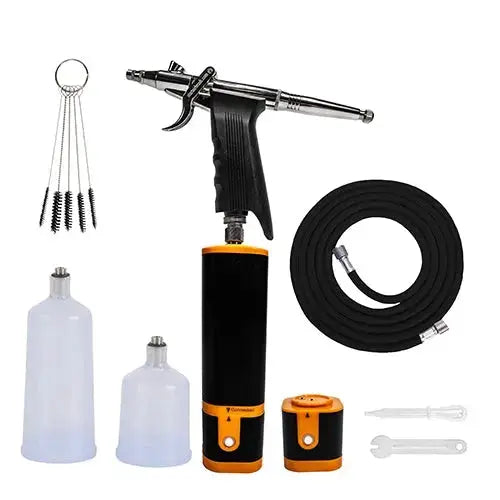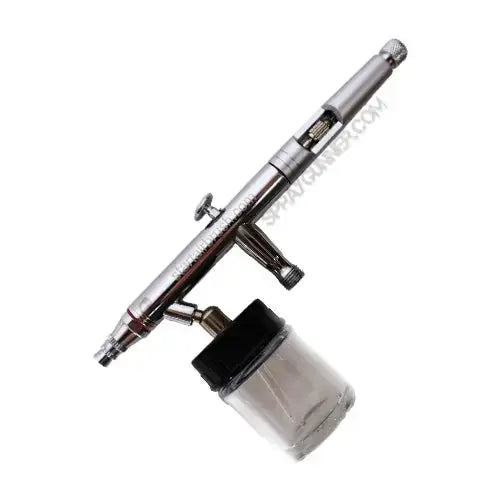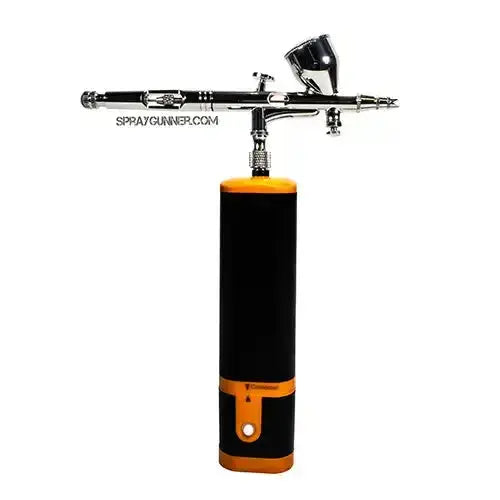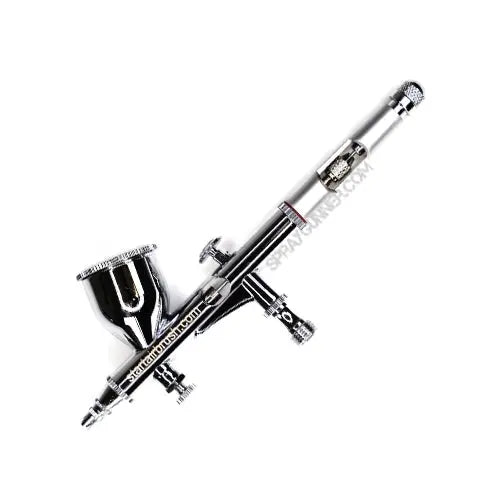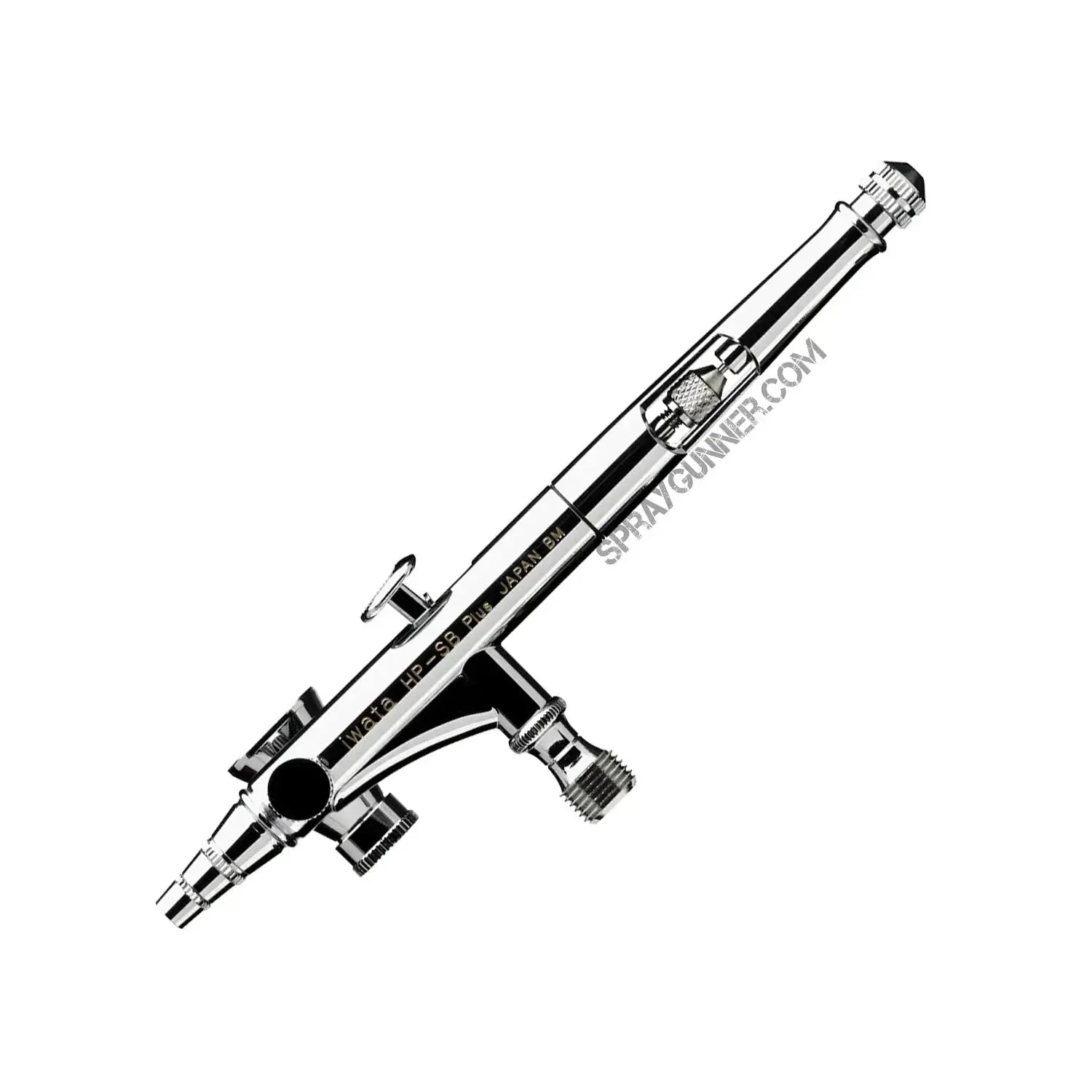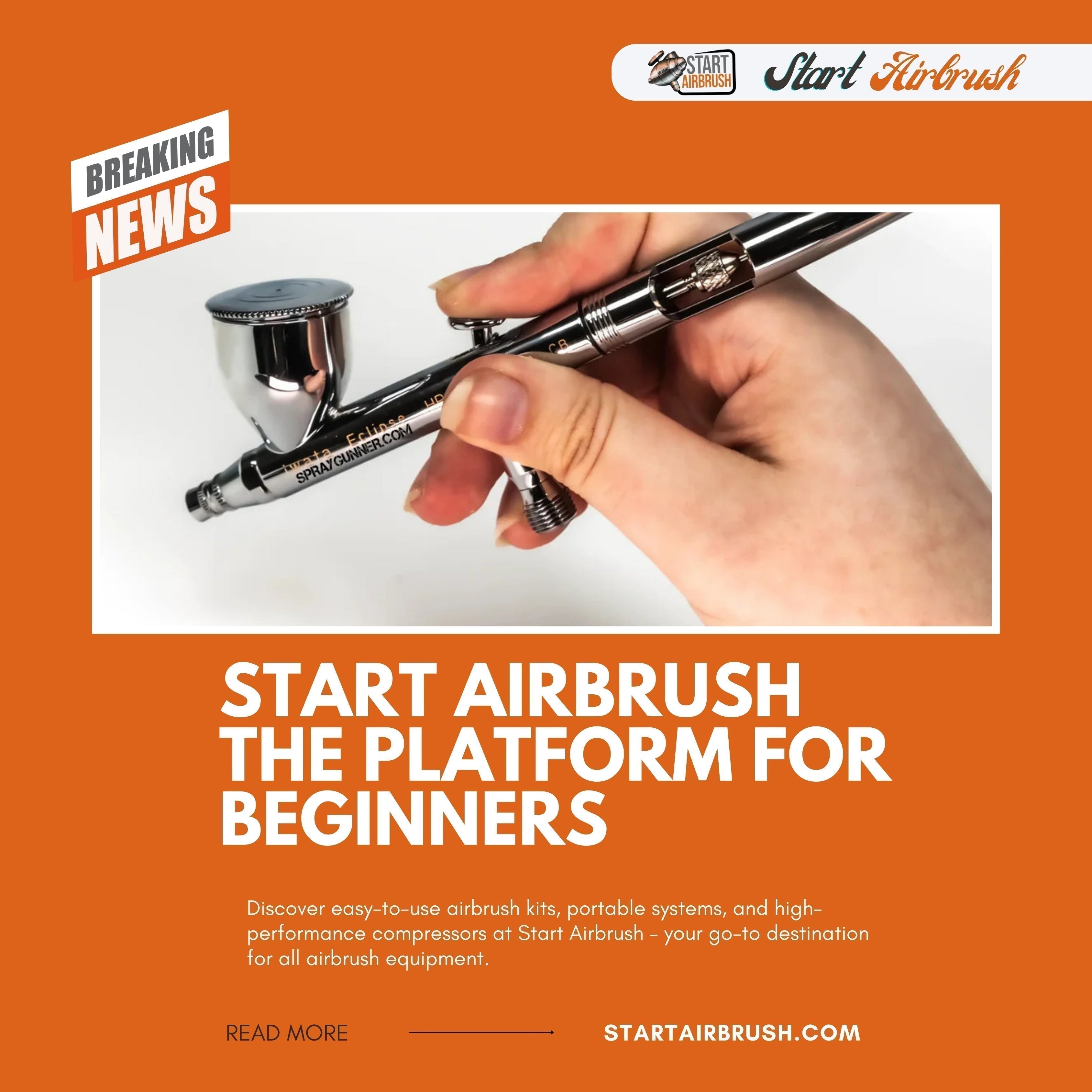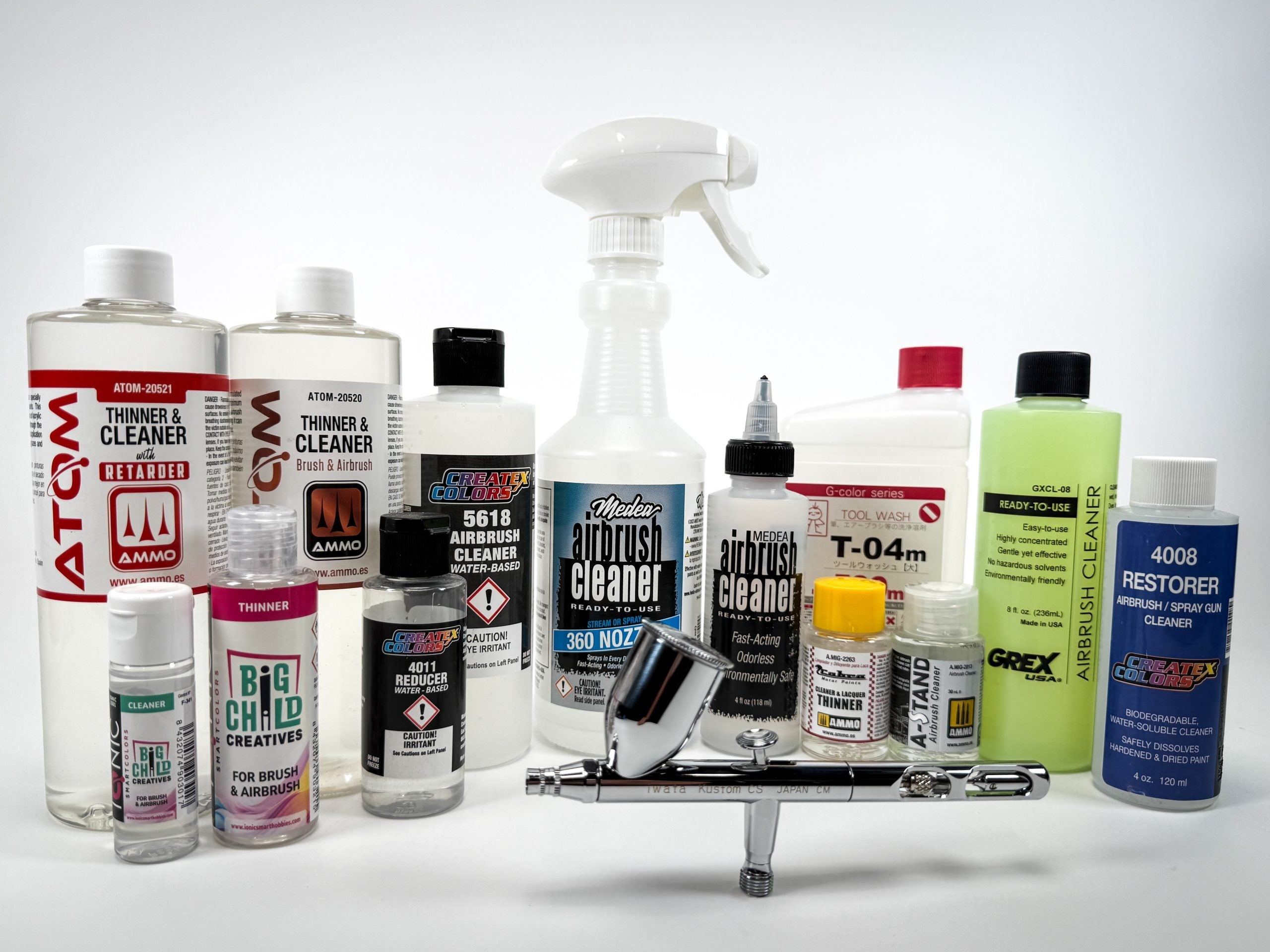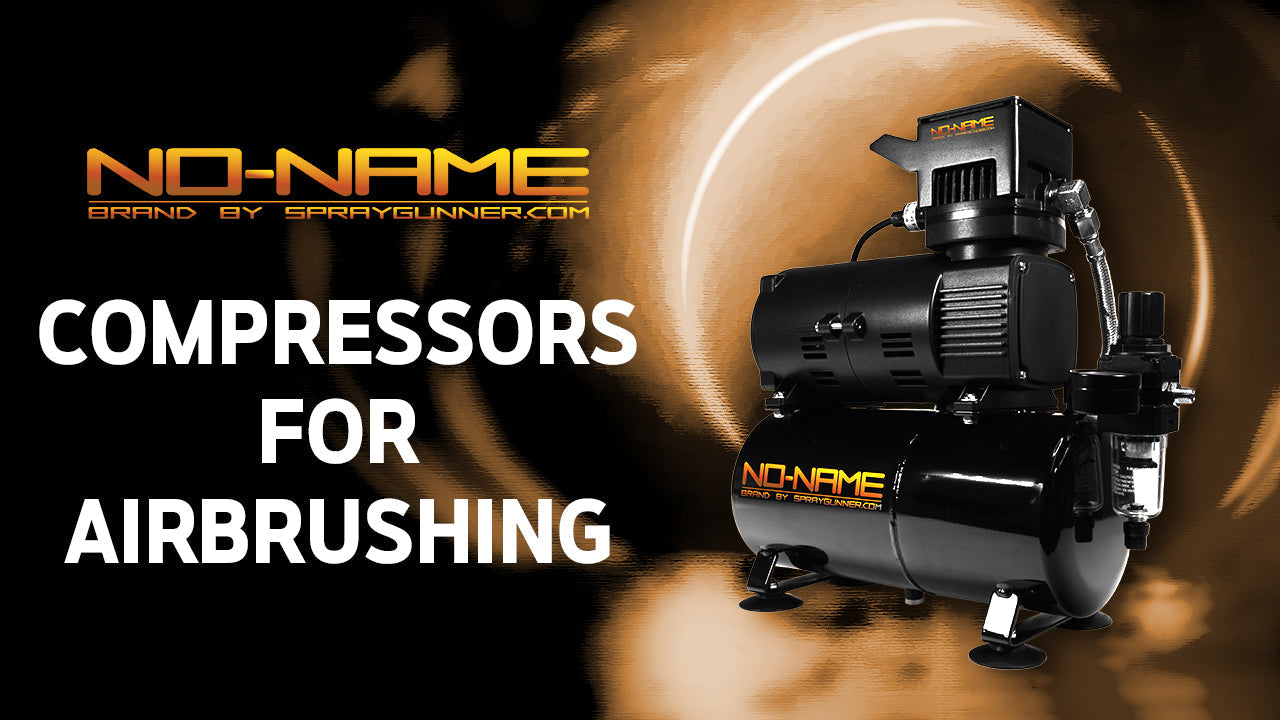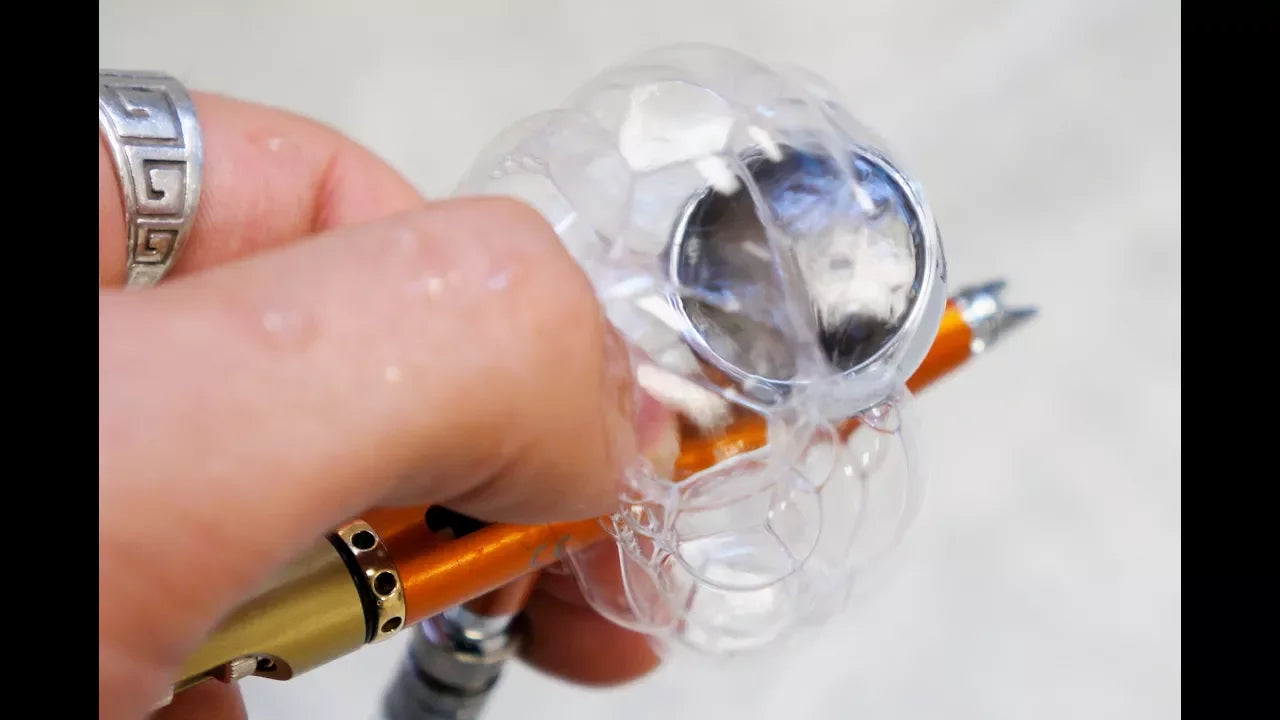SECURE CHECKOUT
FAST SHIPPING
U.S. BASED SERVICE
EASY RETURNS
There are so many options to choose from and so many suppliers! So how to make sure you’re investing your money in the right set of airbrush equipment and paints?
On this website you will find carefully tailored offers for budget-friendly airbrush kits and individual elements with USA warranty and support, as well as a bit more expensive options from top-brands that our team finds well-suited for beginners.
Popular Categories
Airbrush for beginners for sale with USA support
This website is home of NO-NAME brand by SprayGunner and our selection of best-suited airbrushes for beginners from other top-quality brands.
Barber airbrush cordless battery powered compressor with airbrush kit for barbers
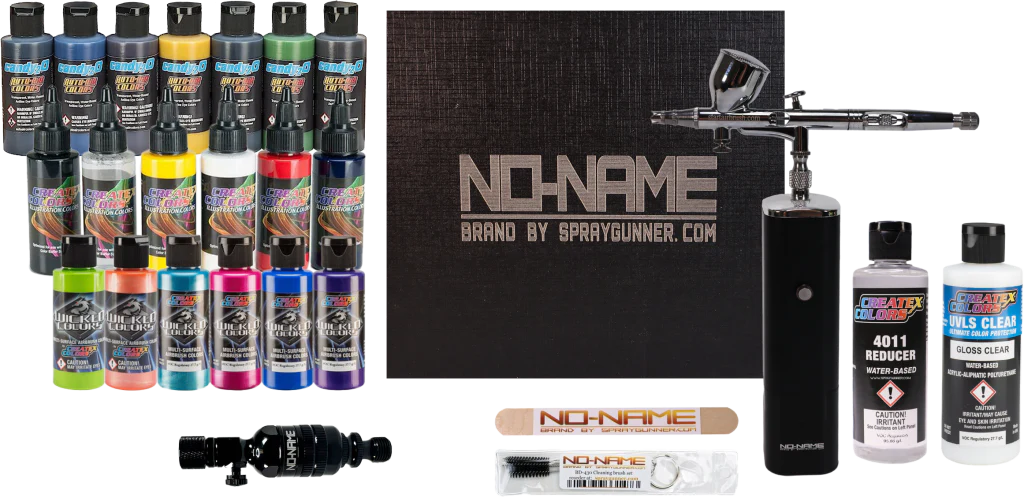
Start Airbrush: The Beginner's Guide to Airbrushing
We've created this website for newcomers into airbrush world and wrote this comprehensive and expertly-crafted resource that equips novice artists with the fundamental knowledge and techniques needed to confidently begin their journey into the world of airbrushing.
Let's start with some basics:
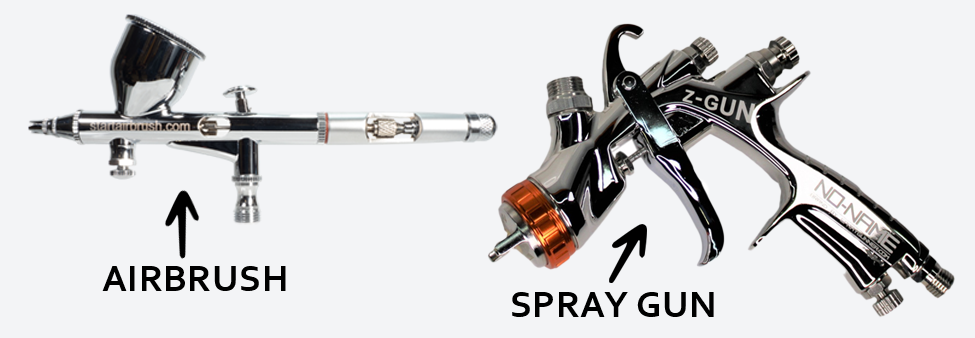
Many people believe that airbrushes and spray guns are the same things. This couldn’t be further from the truth. A spray gun’s main purpose is to handle bigger surfaces, and airbrushes are designed more for pinpoint work. They may have different qualities and scopes of job, but they share one important factor in common. Both paint tools operate using compressed air.
Does this mean I need an air compressor?
That is exactly what it means. Amazingly, people purchase either of these types of tools and are dumbfounded when they do not engage without being conjoined to an air source. Compressed air is vital for the operation of an airbrush. However, this does not mean that compressor is the only option available. You can use canned air as one option. Even an old CO2 tank could be a viable option! Most manufacturers would recommend the use of a compressor, though. This is the most widely used source for airbrushing purposes.
Compressors: Budget vs. Premium
Our recommendation is simple. Bigger is better, just make sure it’s quiet. If it’s in the budget, splurge on the top-of-the-line components. Iwata Power Jet Pro 110-120V Airbrush Compressor is at the top of its class. However, if the price is an object, it’s more practical to get a high-quality airbrush and go cheap on the compressor. That’s the purpose of NO-NAME by SprayGunner compressor model called Cool Tooty. These are run-of-the-mill quality units at an incredibly low price. They even come with a limited 1-year warranty. If you’re a beginner, these are more than sufficient for your airbrushing needs. They may not have all the fancy additions of a higher-priced model, but they’ll still do the job.
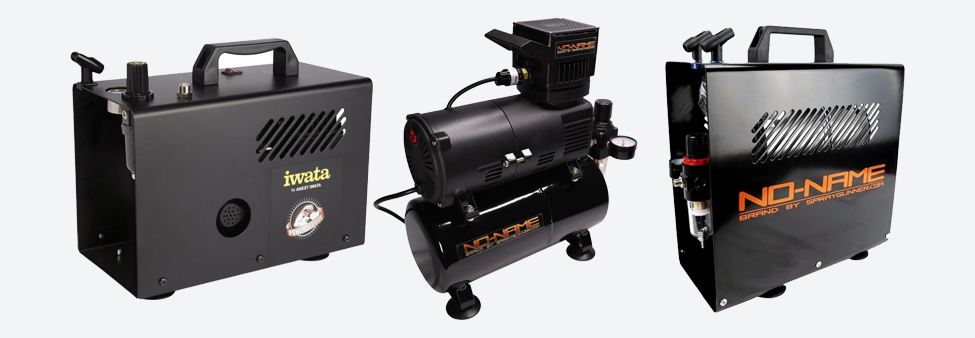
Choosing Based on Your Project Needs
What should your choice be? The biggest factor influencing the decision will be the scope of projects you’re working with. If you need something portable, designs like the NO-NAME SG268F are one of the best options. This model has enough power for comfortable work with most nozzle sizes but are small enough to be considered portable.
Do you need something more compact? Even that does exist now! Your whole setup can be carried in your pocket with a cordless compressor, but keep in mind these are for small projects and demo work. One of the newest and most advanced options – NN-CA22 model.
If your workshop isn’t going to be mobile, there’s only one way to go. Bigger is always better. We’re not talking huge; an industrial style would work, but keep in mind noise might be a factor. These are large enough to accommodate a gallon-sized air tank with a single or double piston motor that quickly pumps air. There will not be any pulsations involved and it can handle any airbrush. Best choice here would be NO-NAME Super Cool Tooty. You can even use hybrid models like the NO-NAME MINIGUN with a fan spray air cap.
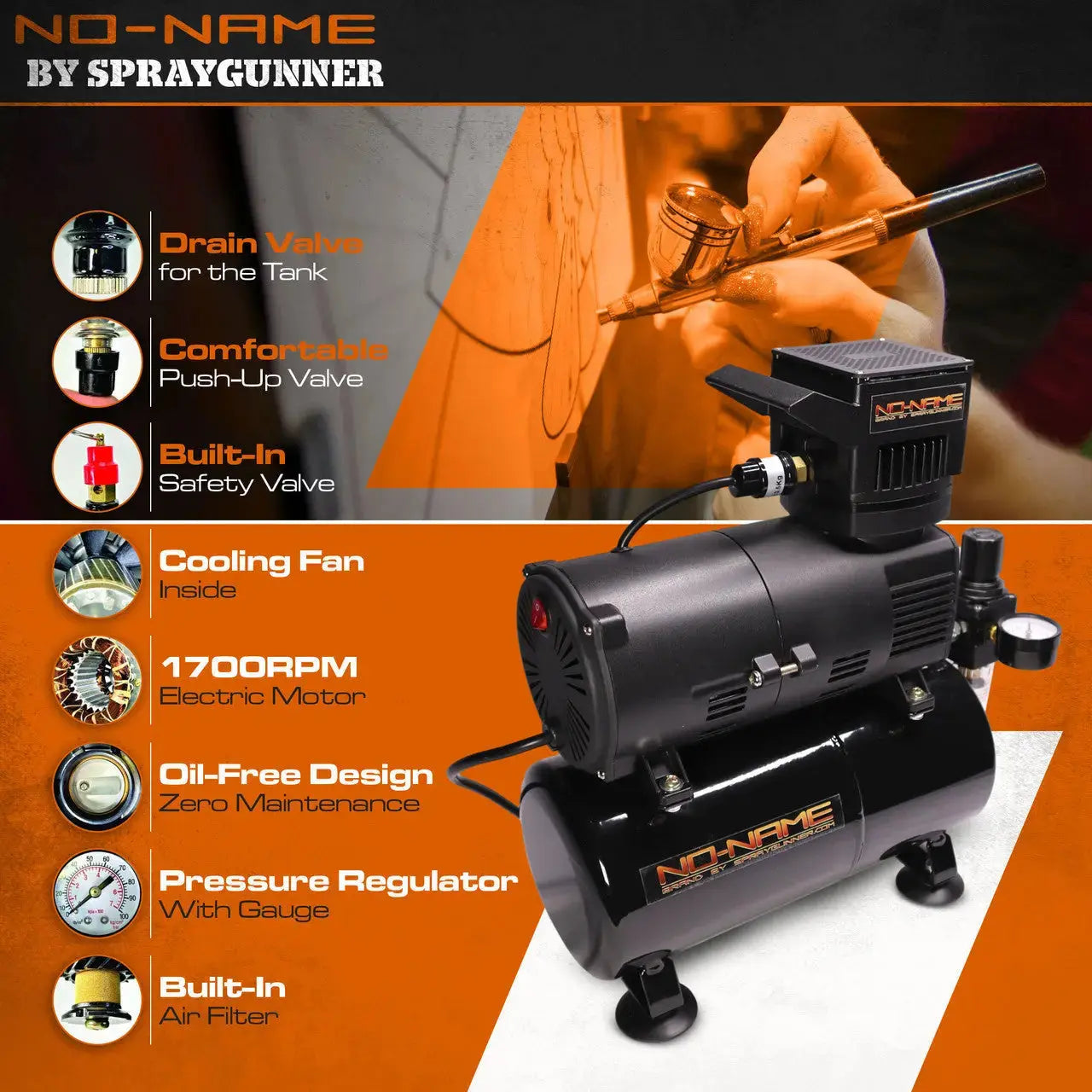
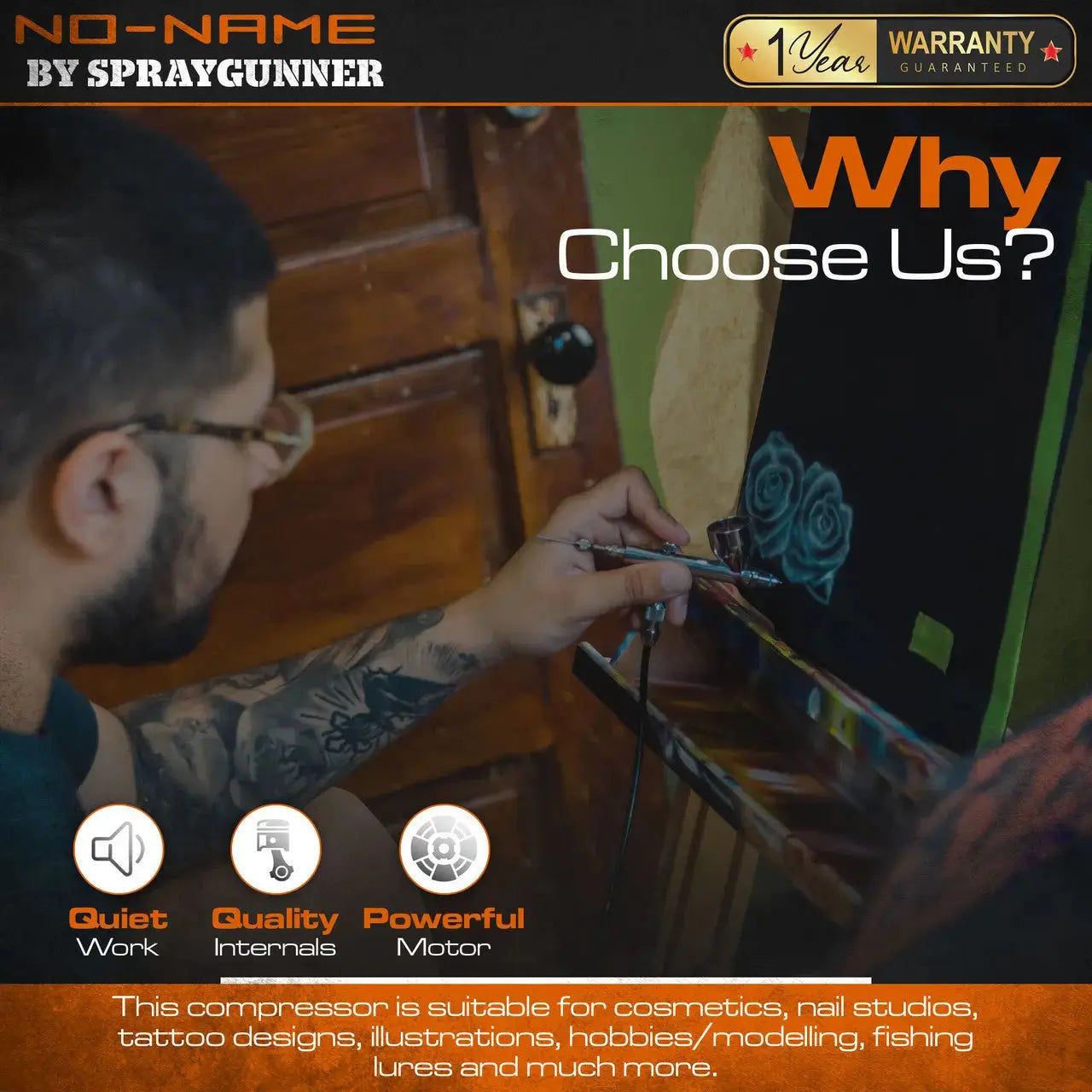
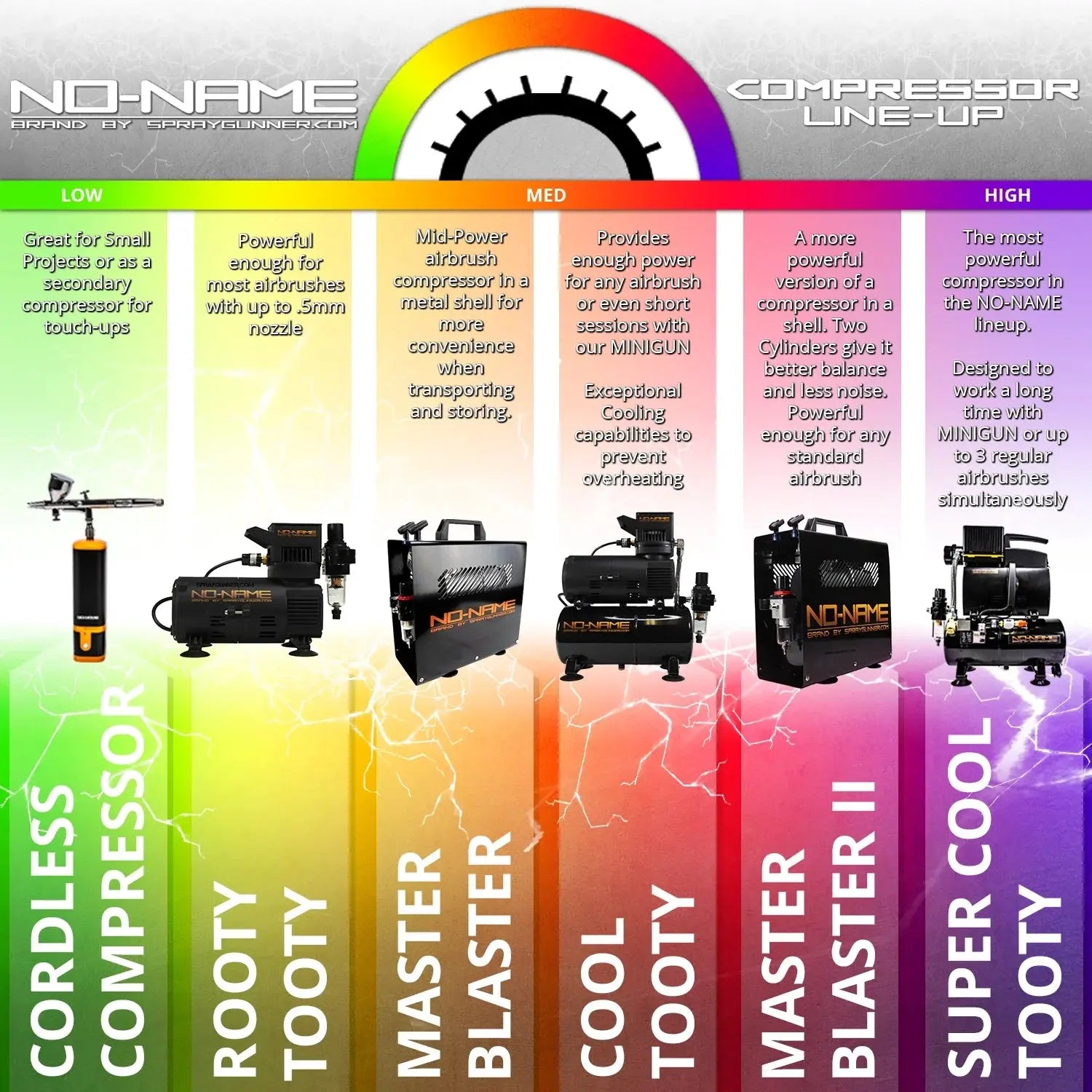
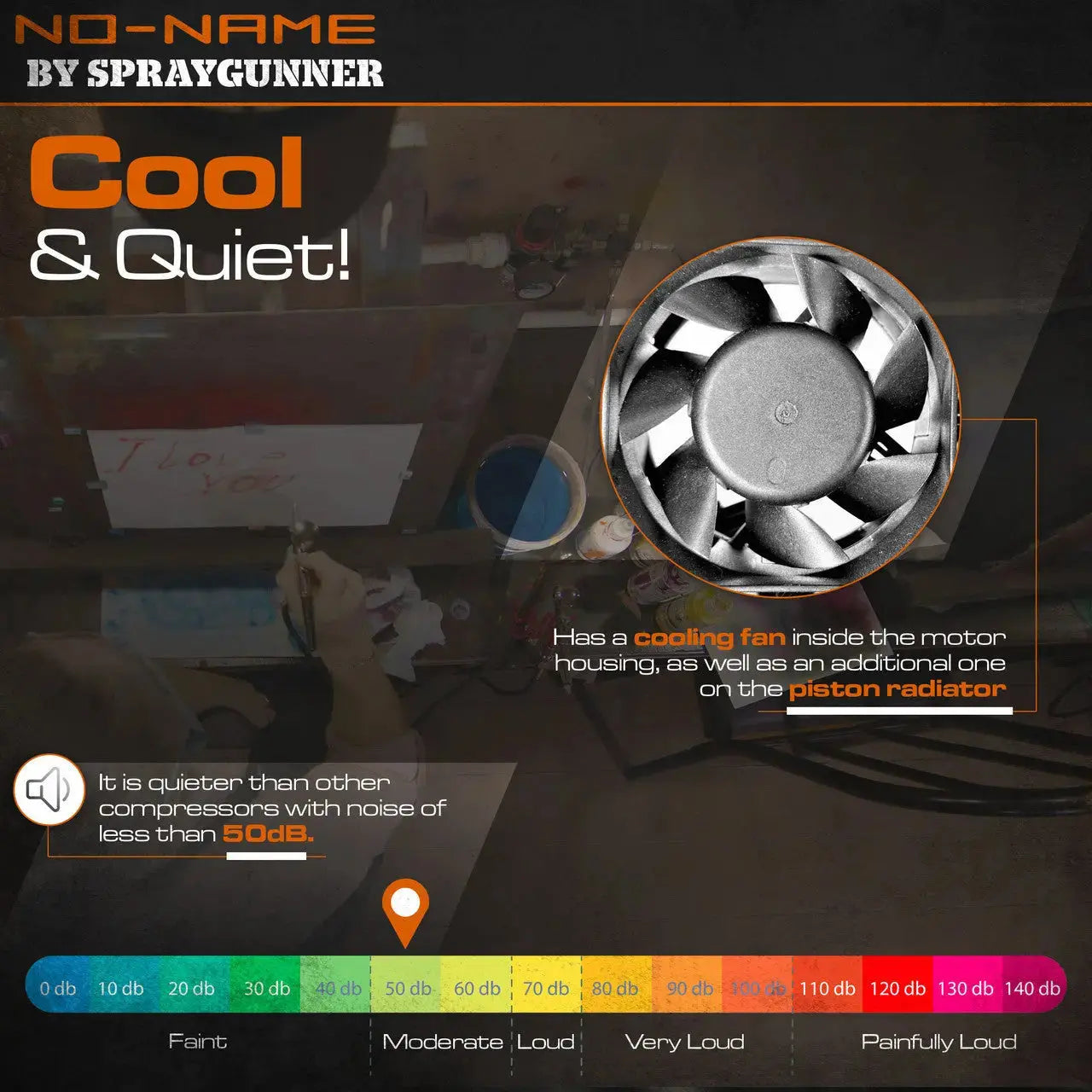
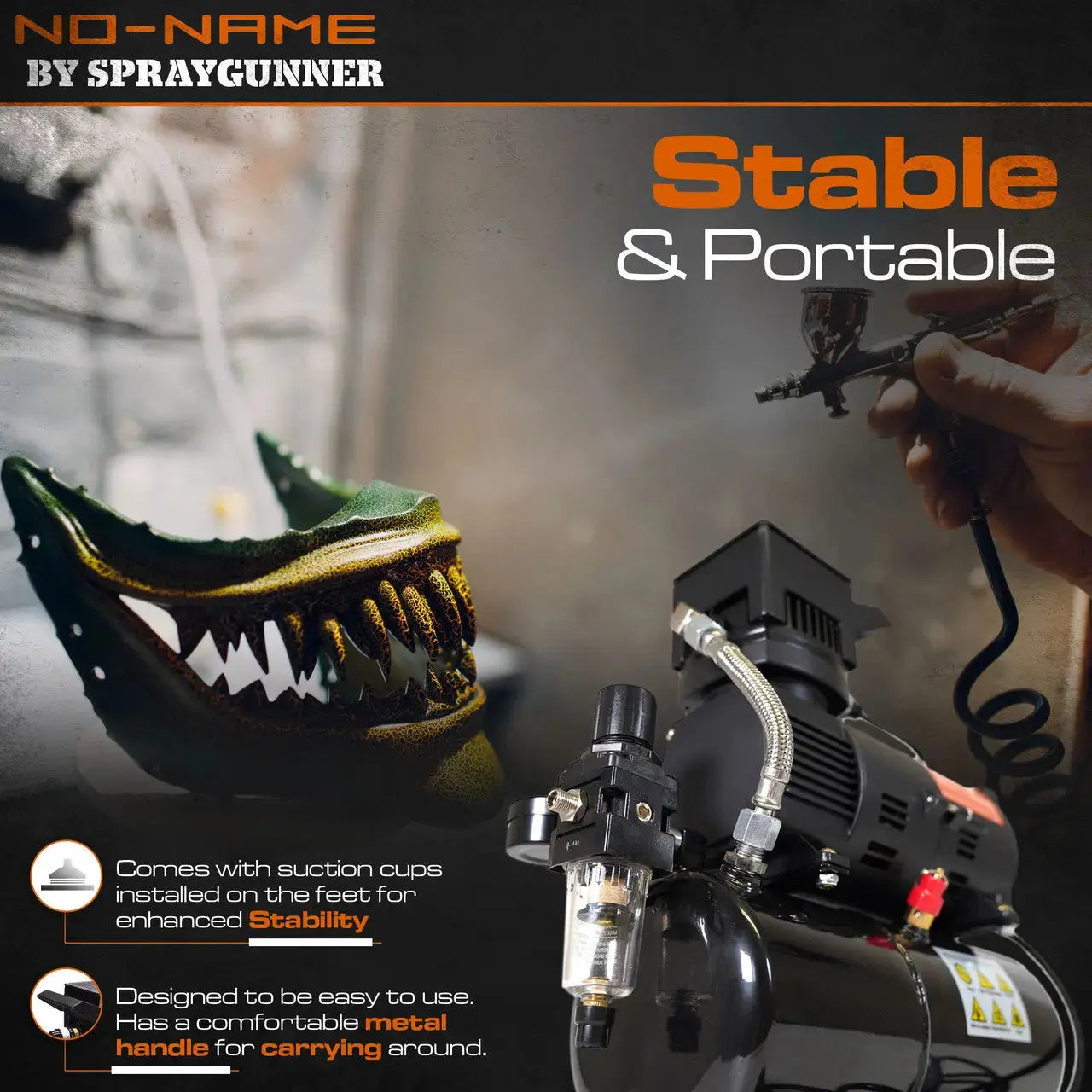
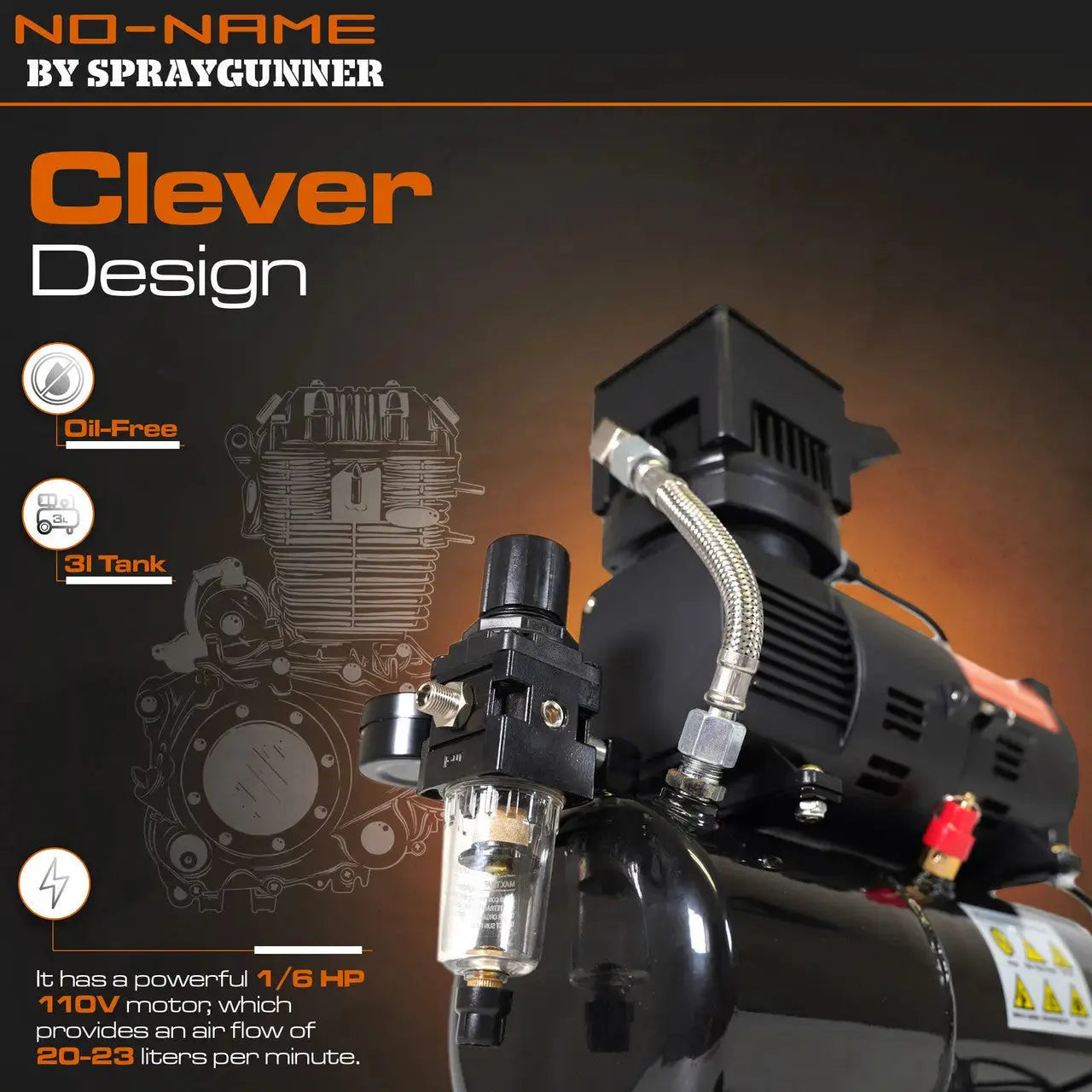
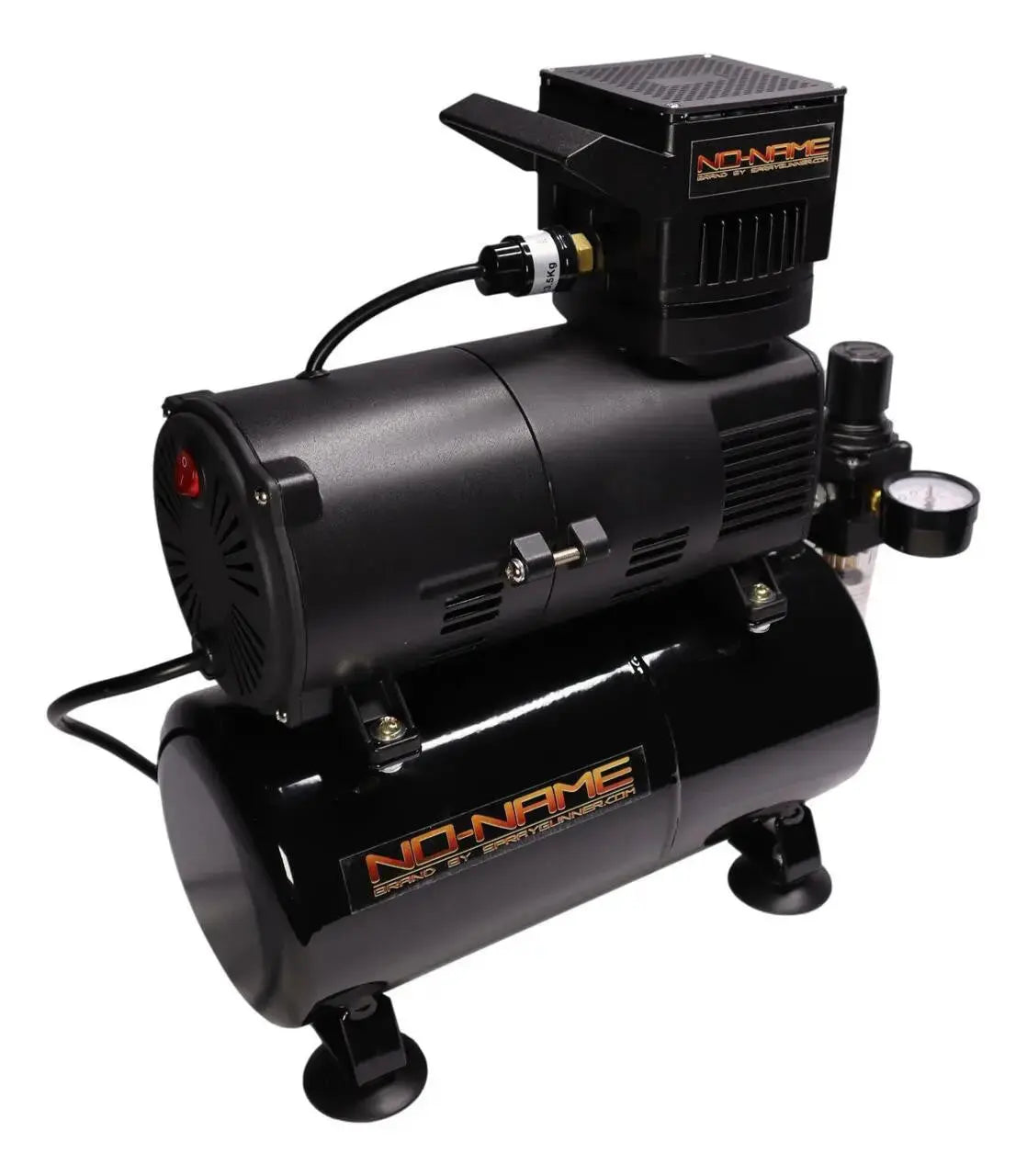
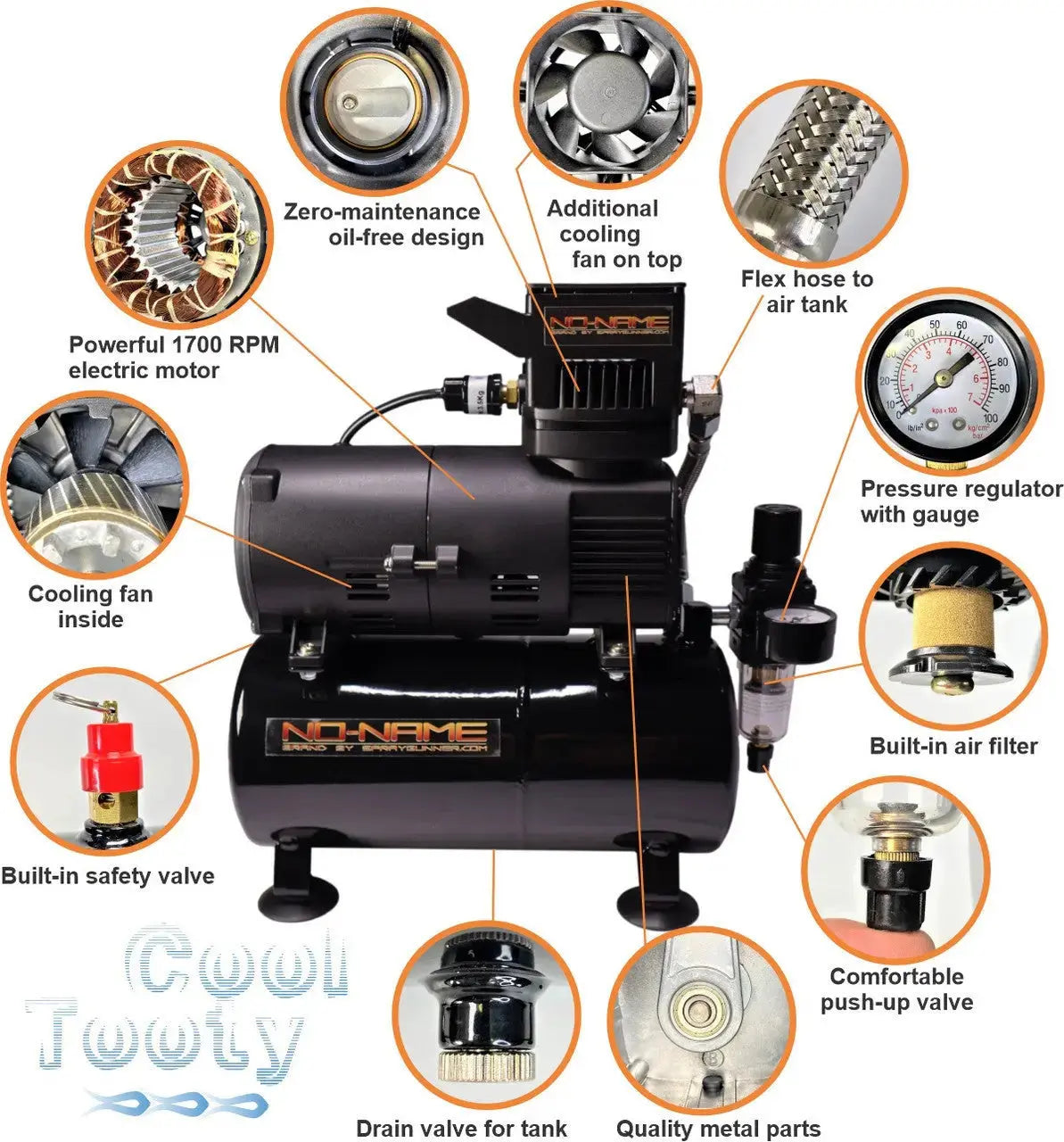
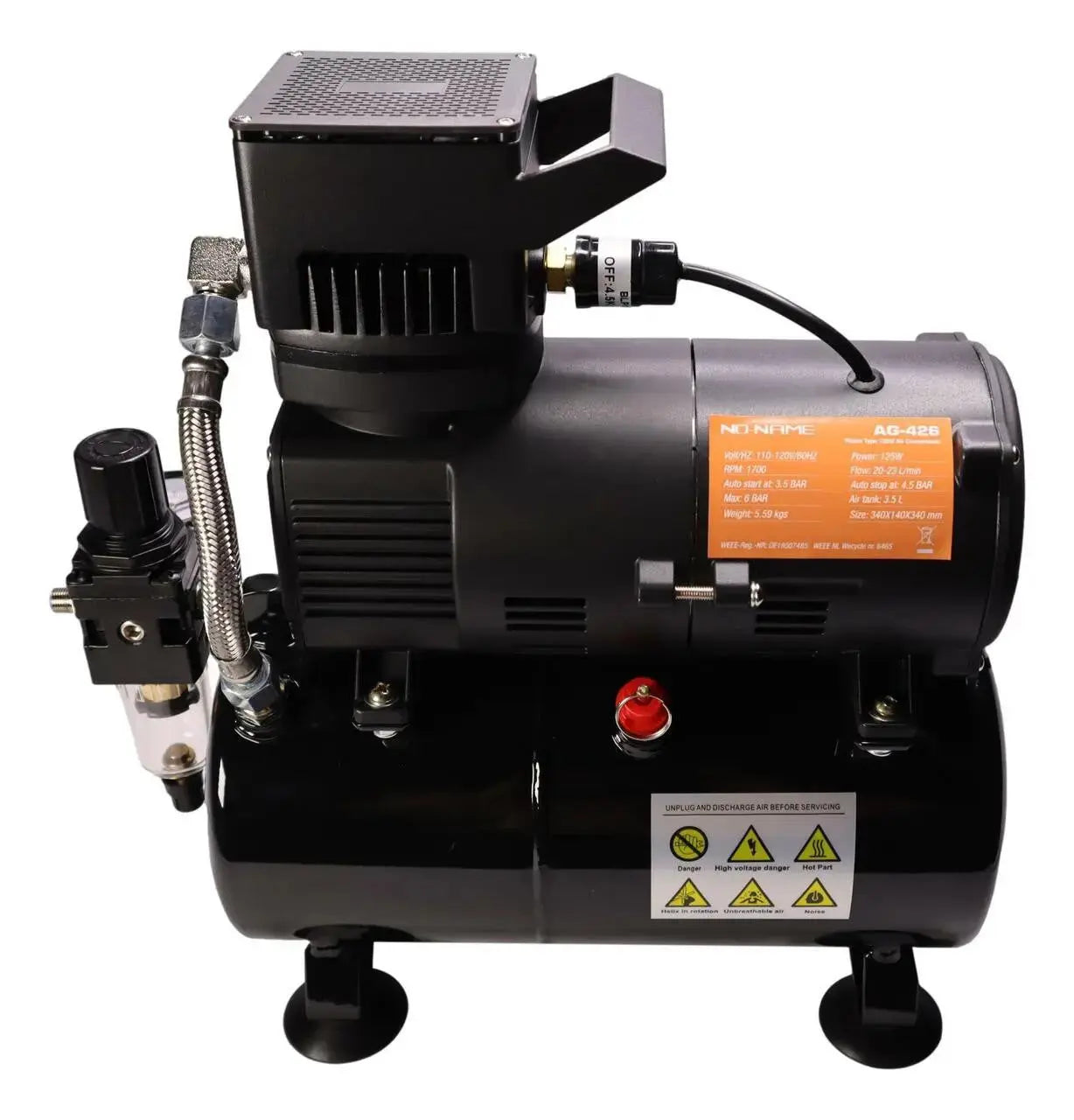
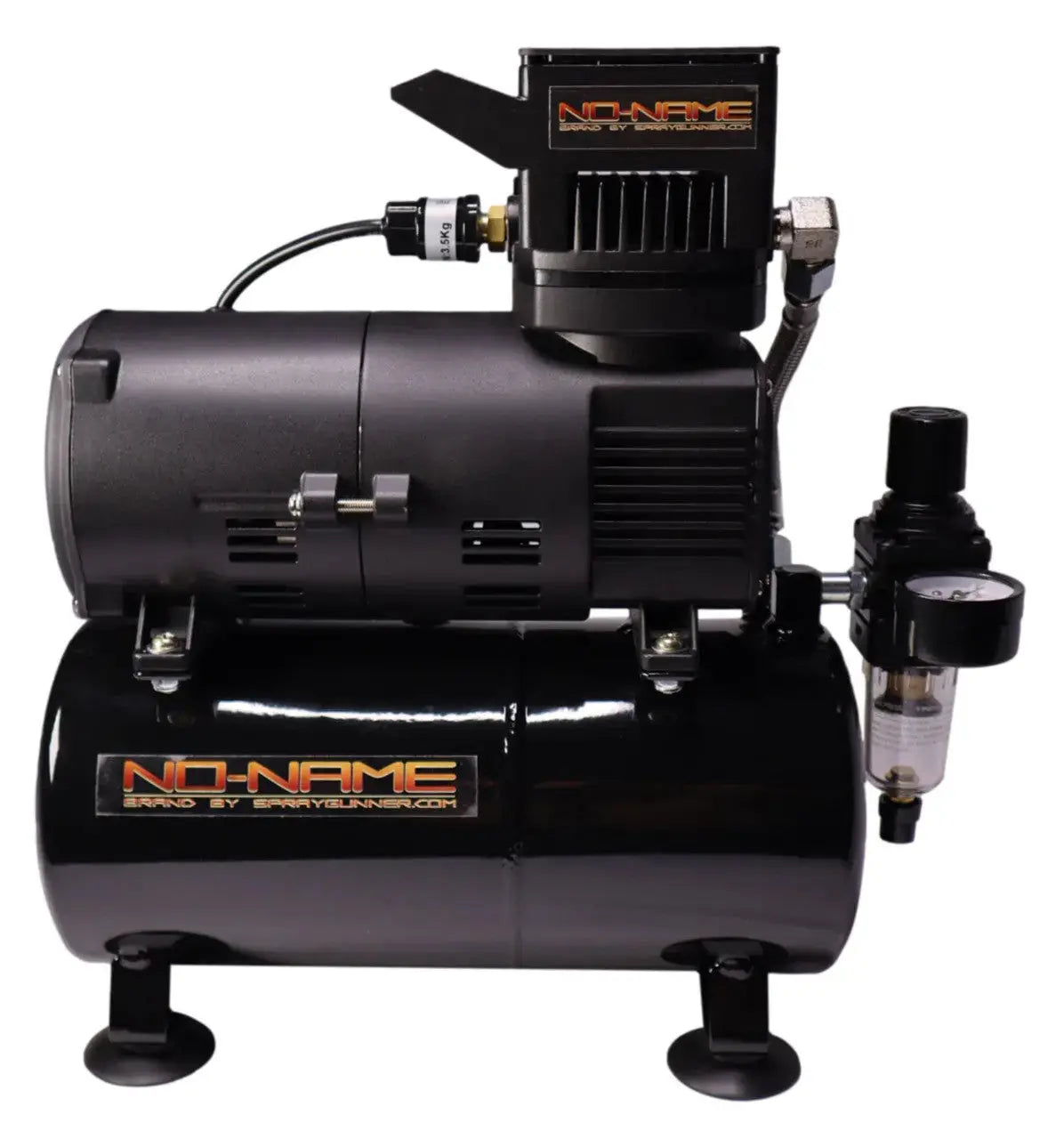

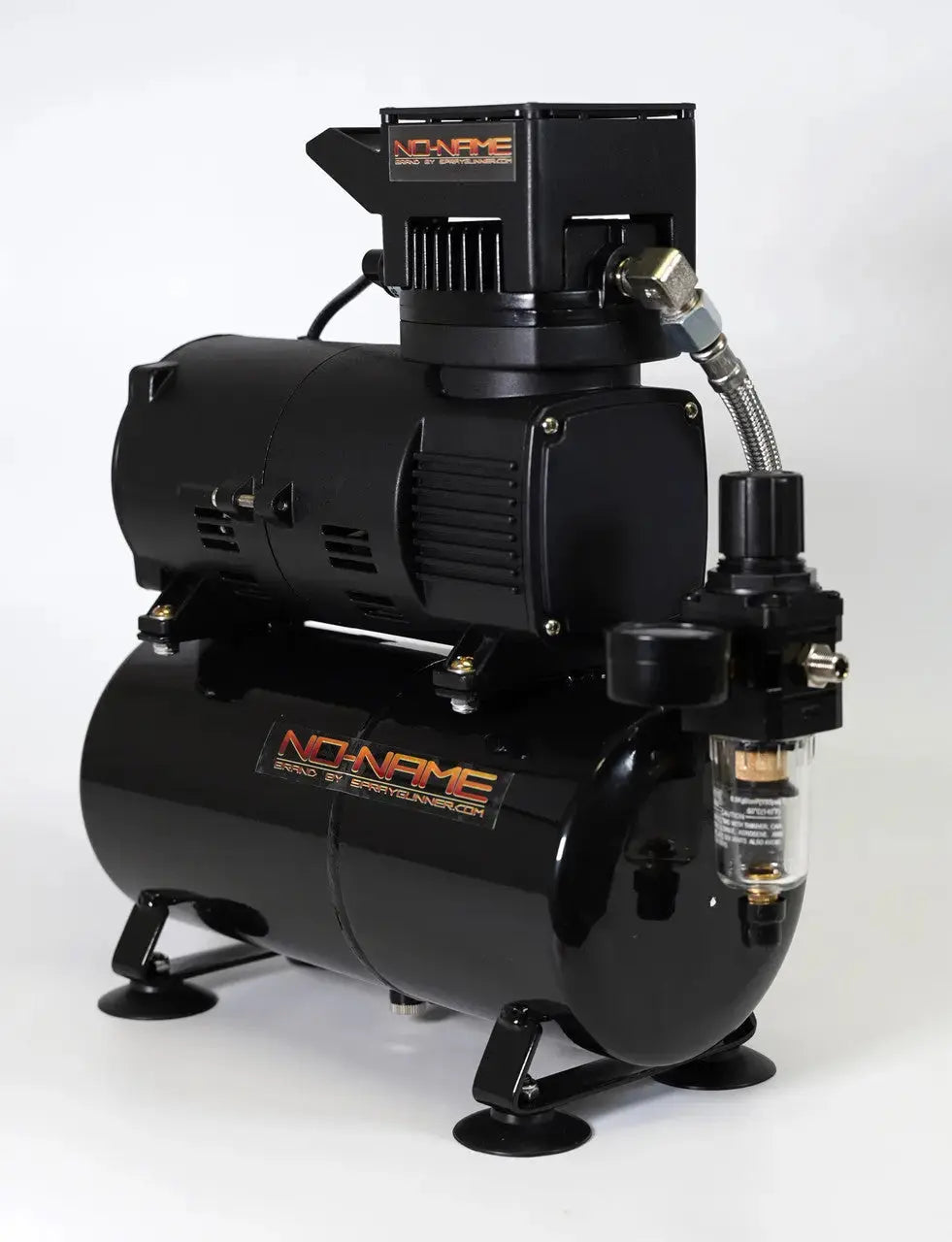
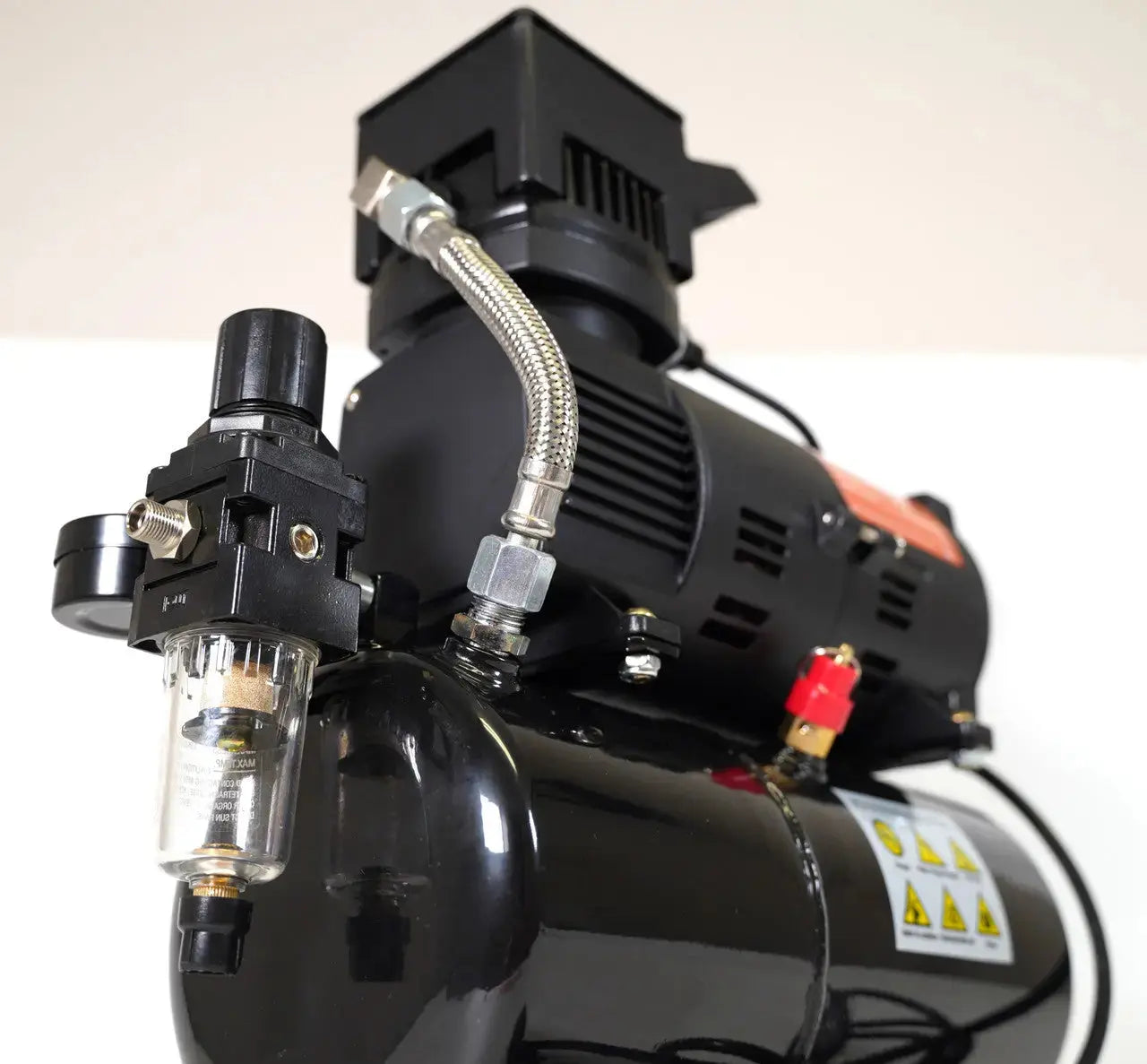
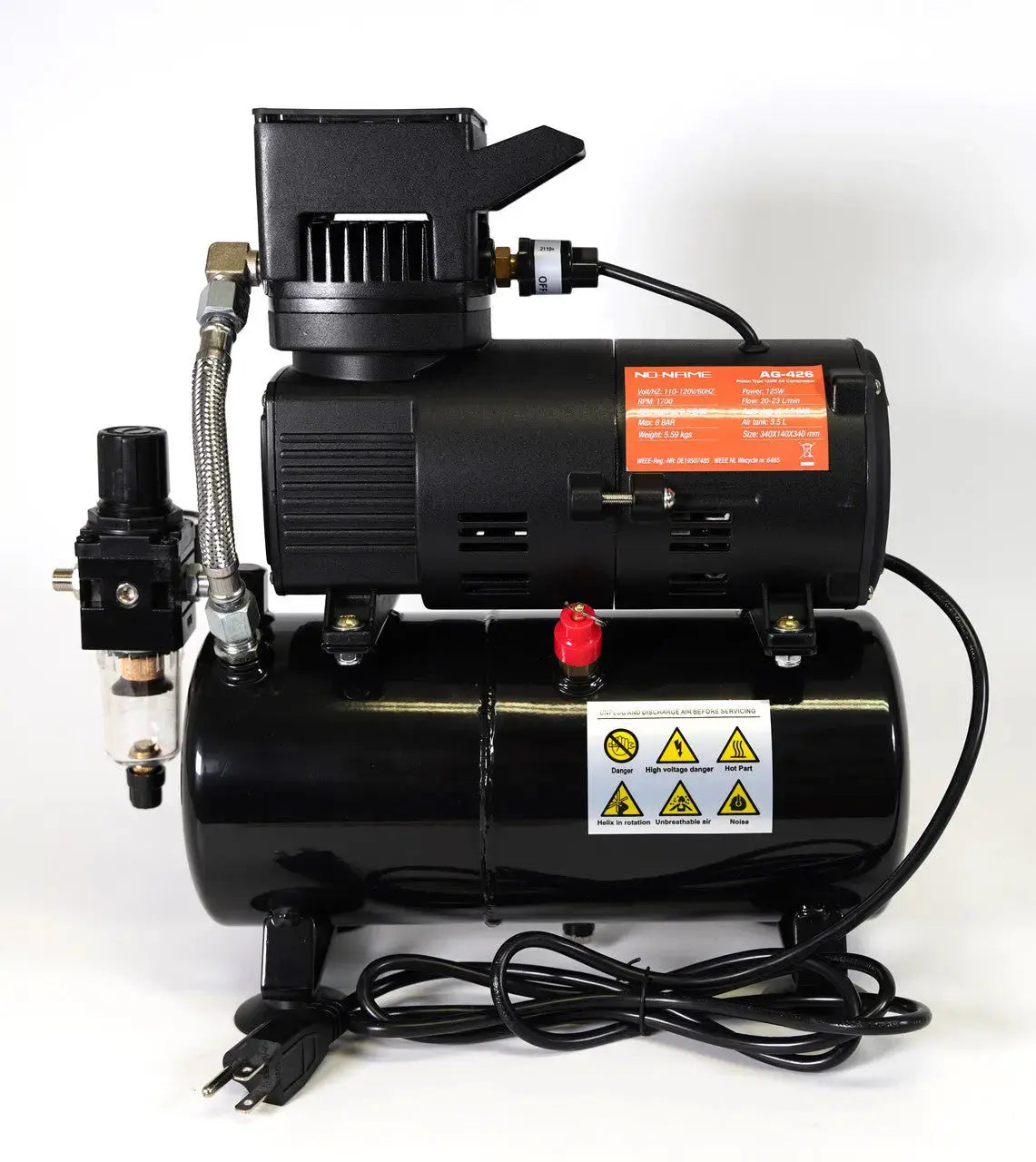
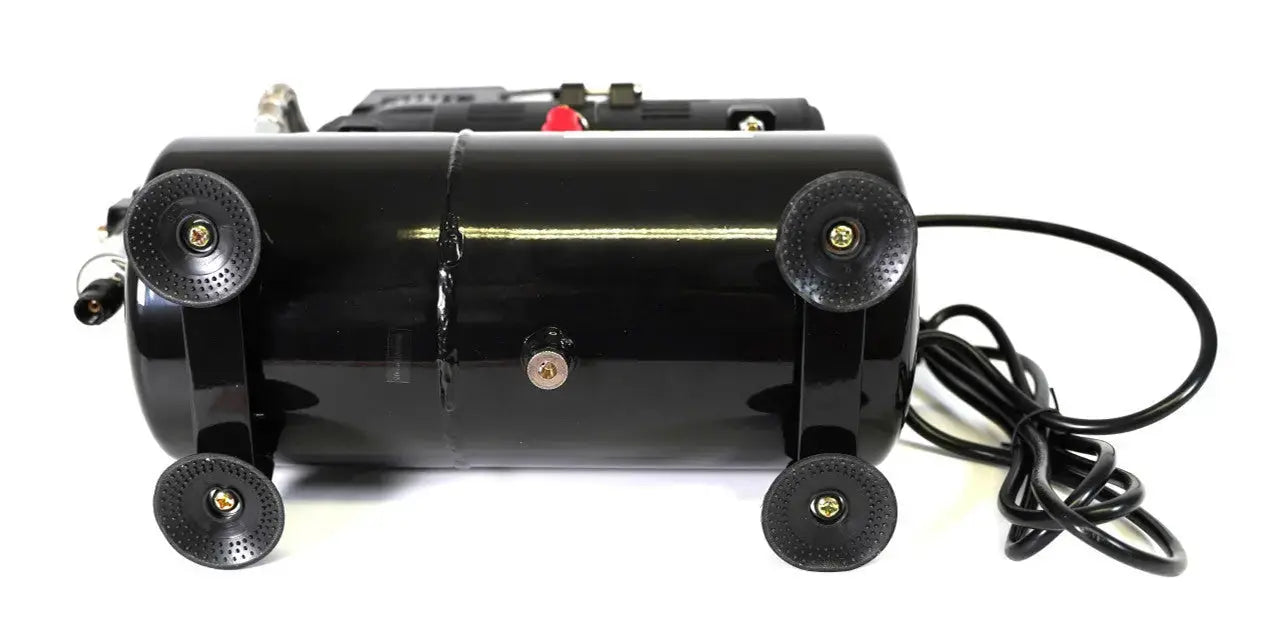
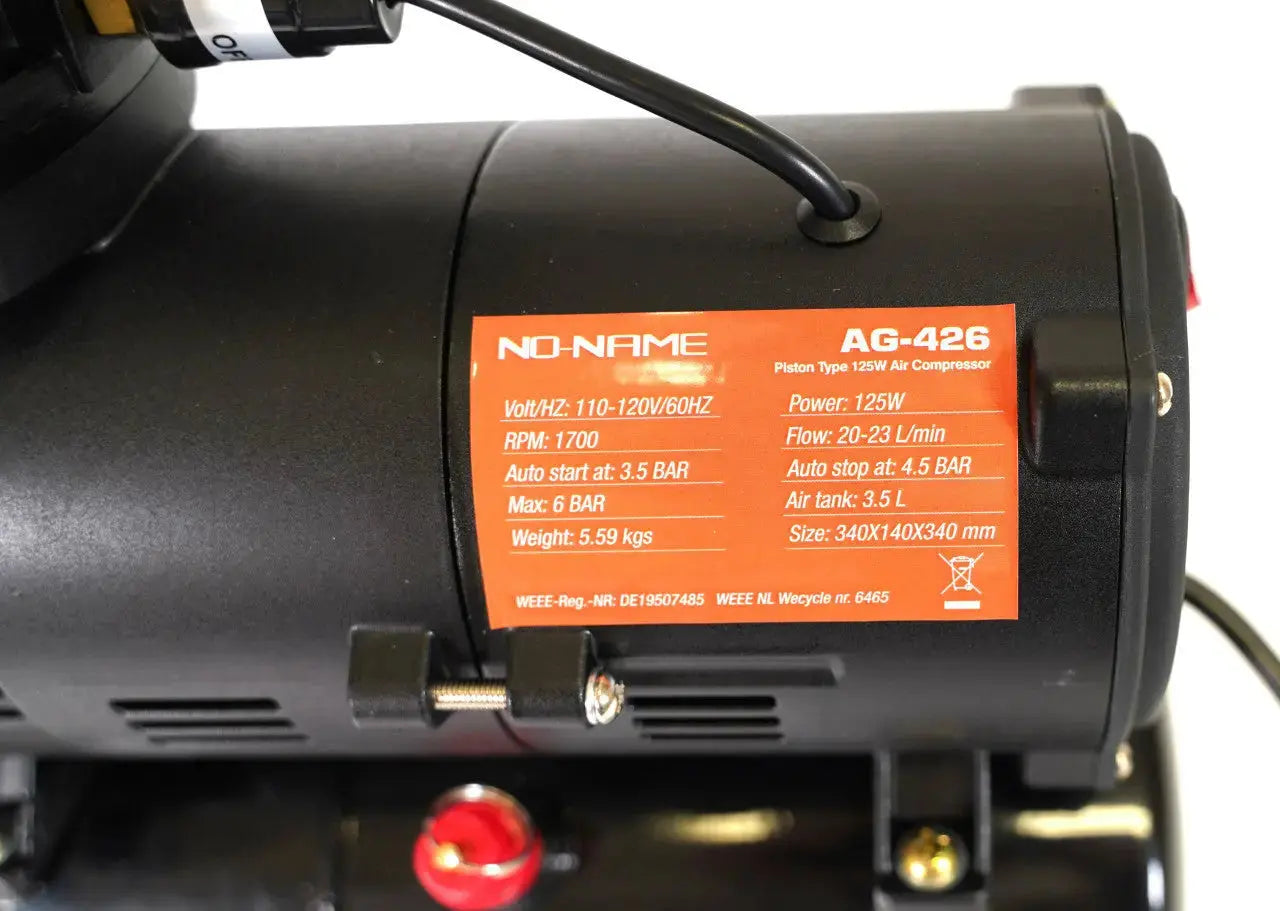
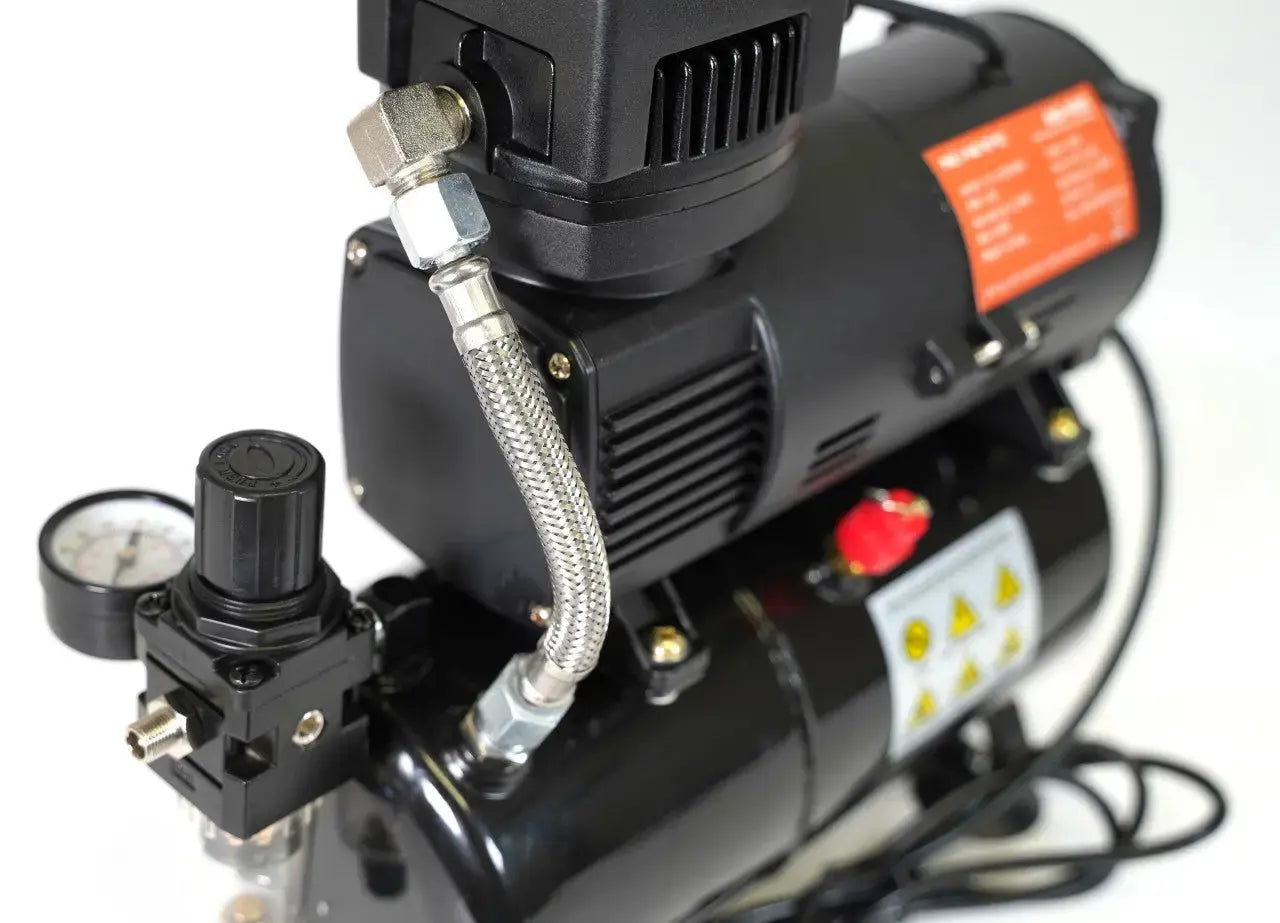
Cool Tooty Airbrush Compressor with 1/4" adapter by NO-NAME Brand
Technical Specs You Should Know
These are some important numbers you will want to remember. For a good detail brush (.23mm- .28mm nozzle) optimal pressure is 15-20 PSI. The travel distance of the air hose will diminish some of the PSI, so you’ll want something rated at 20 PSI if you need a constant 15 at your airbrush. More pressure will be needed based on the nozzle size. If you’re using fan spray air caps, most likely 40-60 PSI will be the most efficient.
Pressure isn’t the only relevant dynamic. You also need to know the volume of air the unit compresses. This is measured in CFM (cubic feet per minute) or LPM (liters per minute). You’ll want at least 7 LPM for a good detailer brush. To be the most efficient, you might think about going all the way up to 20 LPM. Do not be a stuck of brand names. This does not always equate to the highest quality. Most of the top brands you think are U.S.-based are made in China. Products unders NO-NAME brand are supplied from different countries that include China, Taiwan, USA, and Japan. ALL of the NO-NAME products come with full US-based support and warranty.
Back to the Basics: AIRBRUSH
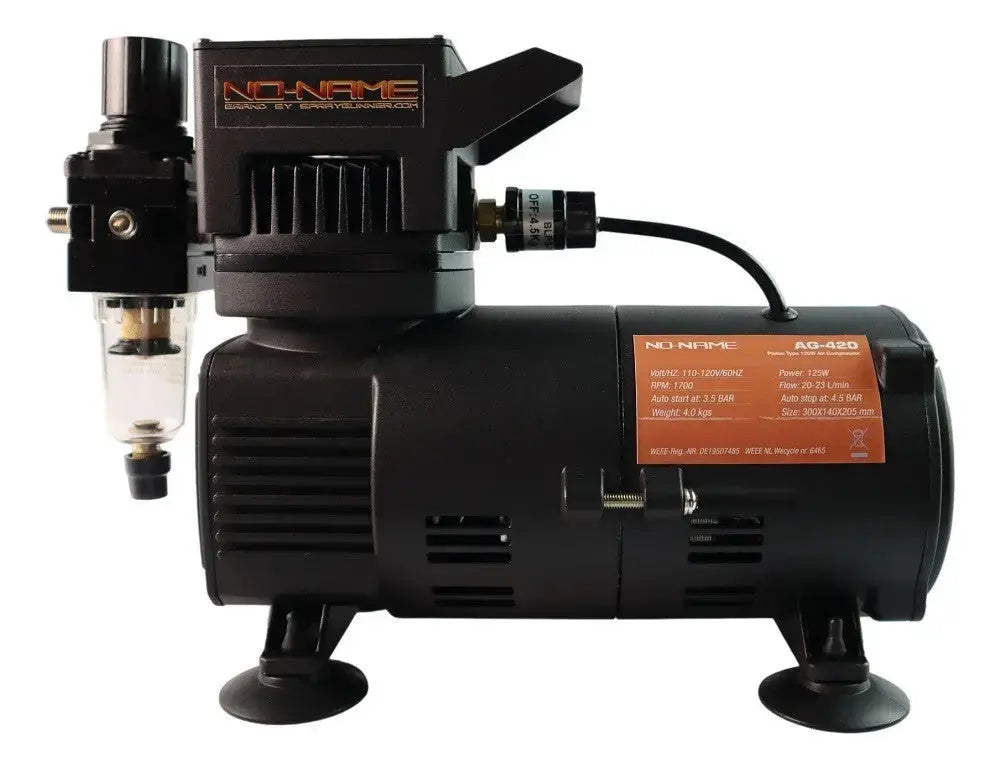
Compressors Are Simple
Compressors are much simpler to pick. Regardless of the brand, you are going to deal with the same kind of compressed air, no matter what. If you took an expensive big-name air compressor and put it side-by-side with a NO-NAME model and engaged in a blind comparison, you would never notice the difference. It’s going to be the same product compressed in the same type of tank, pushed through the same hose. Maybe some difference in noise levels.
Airbrushes Are Different
When it comes to the airbrush, though, it’s a whole different ballgame.
The airbrush is your tool. You have it, you work with it. You must understand how it works and get familiar with every feature. This makes recommendations a lot harder. Some guides are headlined as “Budget vs. Branded”, but we disagree with this. Again, don’t fall for the brand name. Fancy airbrushes come from China that sells for hundreds. The reality is you could have gotten the same quality from a $20 generic "NO-NAME brand" airbrush. The manufacturing design and quality is what is important.
What We Learned About Brands
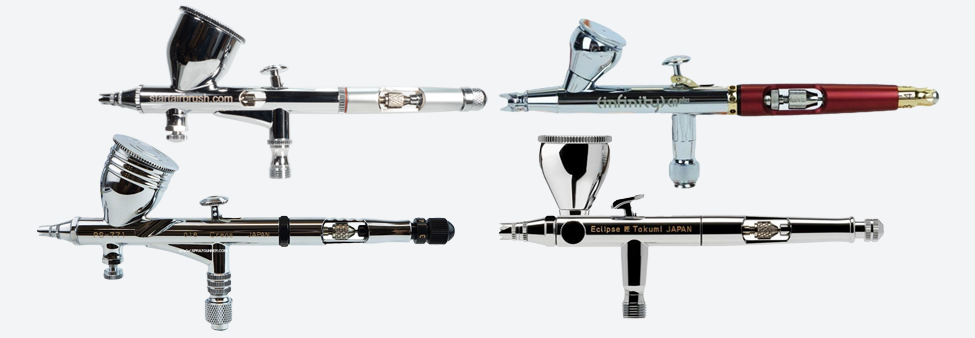
Certain manufacturers think differently than others. Some styles are more versatile and specifically crafted to do multiple jobs. Some manufacturers stick to specific scopes of work and focus on that work alone. We have spent multiple hours, days, and weeks testing and learning about manufacturers out there. We would love to share the things we learned!
Personal Choice Matters
One thing we cannot do, however, is make the choice for you. You must hold the tool and figure out what feels comfortable to you. The only way you decide this is through experience. We can only recommend what we know and point you in the right direction. You make the choice based on your specific needs.
The most common question we hear is, “what is the best airbrush?” There is no right way to answer this question. It is like asking what is the best truck, or what’s the best computer? It is all based on what your specific needs are.
People also ask, “What’s better, a Iwata or Harder and Steenbeck?” Well, would you rather have a Japanese or a German automobile? These are questions of individuality and we cannot give much advice on this specific type of question. What we can do is give you informed reports on each model and share what we’ve found out. If you have specific questions based on specific models, we will be more than happy to answer.
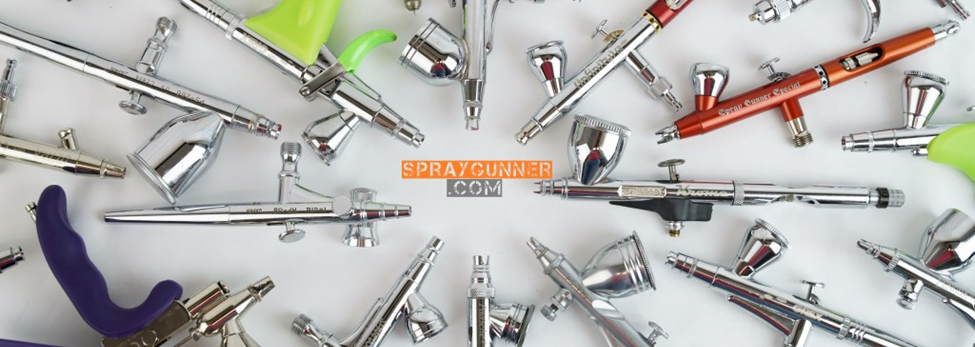
General Airbrush Information
Many years ago, someone classified airbrushes into two separate groups. One was “internal mix” and the other was “external mix”. We recommend choosing the internal version for most types of work. Almost every airbrush we sell is the internal mixing type. Do not be fooled by this term, nothing is internally mixed in these designs.
Terms to Remember
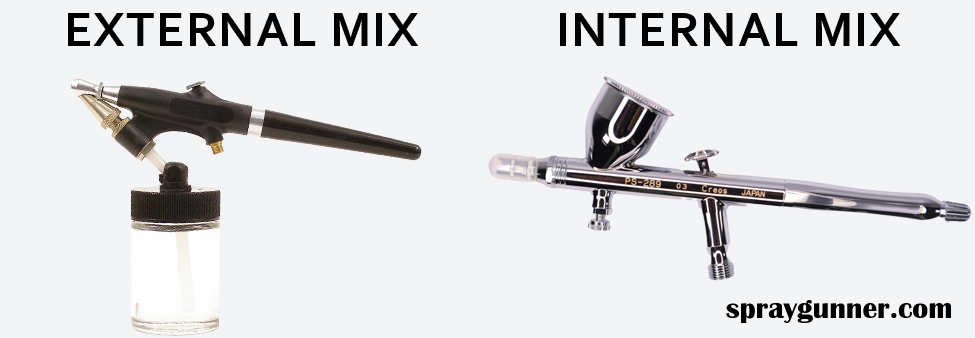
Feed type. Airbrushes are either gravity fed (most common), side fed, or suction (also bottom fed). There are different mixes, like a siphon bottle attached to a side-feed airbrush, or an adapter to make the gravity feed more efficiently. This type is from Harder and Steenbeck. Keep your options open and always weigh the pros and cons of each model.
Gravity, Side, and Siphon Feed Styles
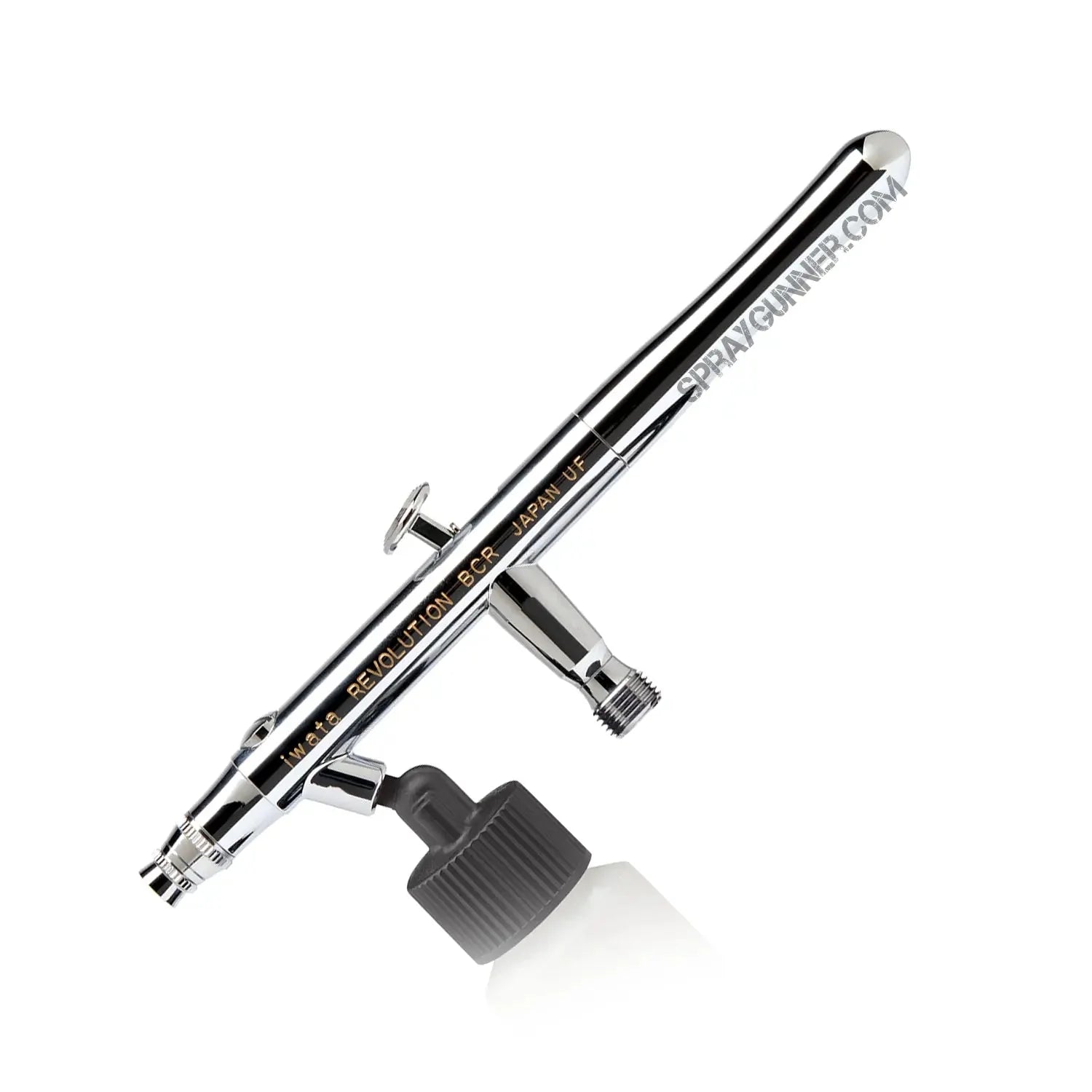
Siphon Feed
Siphon feeders are the most popular for large nozzle sizes. They allow a huge bottle to be attached, or you can work directly from the can. Artists who do extremely large projects like murals and different articles of clothing usually prefer this style. It is very convenient for switching colors often.
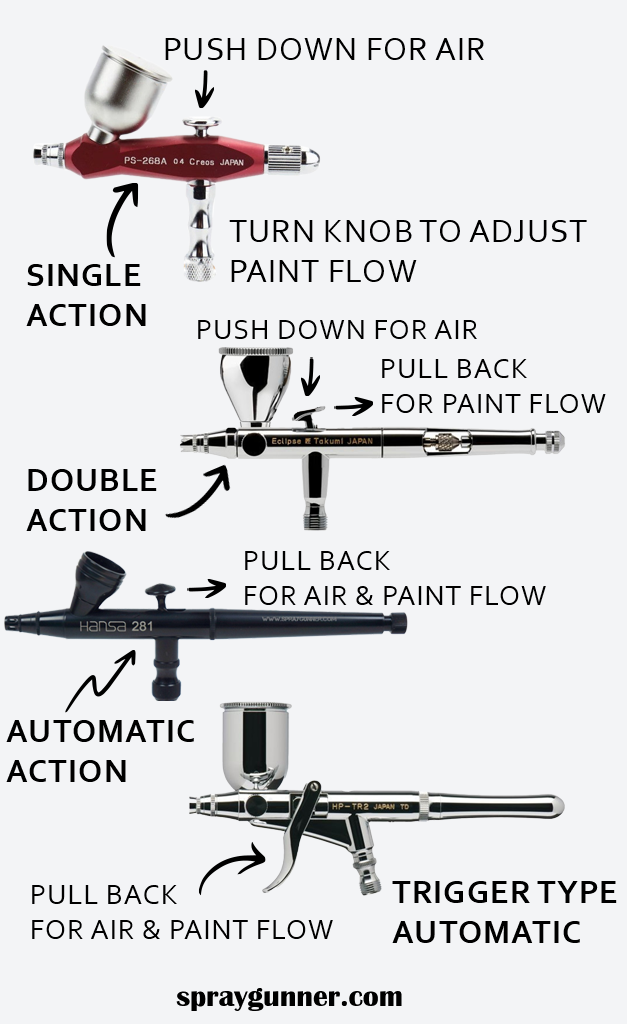
Different Control Types Exist
The most basic is the single-action style airbrush. The trigger only controls the airflow. The trigger must be engaged to start the flow of air, then you can turn back the knob to regulate the amount of paint released. Only basic painting jobs are recommended for this because there’s a huge downside. The nozzle stays open after the spraying is done and the paint continues to flow. Because of this, a lot of splatter is created which can create a mess.
Another single action brush that has more regular airflow and has trigger-controlled needle action is also available. This design has better spraying quality because of increased flow control of the paint. The inconvenience of this is the fact that the airbrush always leaks air. Because of this, stencils and other designs always fly from the workspace.
The best choice is probably the double-action airbrush. The trigger simultaneously controls the air AND paint flow. Up and down toggling on the trigger starts and stops the air, while forward and backward moves the needle, allowing it to toggle the paint flow. There is a learning curve involved with this style, but it is well worth it for the control factor.
Double dependent action airbrushes (also known as automatic) like the Grex Tritium TG3 have a trigger located under the airbrush body. When the user pulls back on the trigger, the air starts before the paint. When the trigger is squeezed a little harder, the paint begins to flow. This is not available on only pistol-grip style airbrushes – there are models like the Hansa 281 with a similar design. This has a similar look to double-action airbrushes with the trigger located at the top of the brush that’s usually held by the index finger. However, there is a catch. There is no up and down trigger. The trigger can only be toggled back and forward. This has the same effect as mentioned before, with the air flowing first, followed by the paint.
Nozzle Sizes
The nozzle size is also extremely important. You do not want to get wrapped up in just the control and feed types. These are the different nozzle sizes:
Nozzle size selection depends on what type of project you will be working on. General Purpose range is good for most new users. These work with any type of airbrush paint and have a comfortable feel. A detailed airbrush isn’t always the best option because of the narrow nozzle. There are clogging issues involved with detail airbrushes, especially when you use low-quality paint. You will be limited to styles of paint, as metallics cannot be used with these types of airbrushes.
The nozzle can also be treated as a self-centering or cone type. There are several additional nozzle sizes as well.
Self-centering is the most basic and universal choice, due to the optional sizes. The detail nozzle can be replaced with a general purpose or heavyset, allowing the user to switch to an entirely different set of capabilities. The Harder & Steenbeck Ultra 2024 airbrush is a great example of this style. It is also one of the best to start with - this airbrush teaches its user how to operate double-action airbrush.
Threaded nozzles can be extremely hard to remove and sometimes require a tool. Tinier threaded nozzles are easily damaged during installation or cleaning. You should have a clear picture of the nozzle you want since this factor will usually be very precise. However, this will limit you to only one nozzle size, unless you want to risk damage each time you change the nozzle. The GSI Creos PS-771 is the best airbrush for small threaded nozzles. It is a tool of extremely high-quality detail and works well for that purpose. Just do not expect it to be a workhorse.
Grex offers a lot of larger-sized threaded nozzles. A tool is still mandatory for installation, but these do not damage as easily. There is a broader range available, also. You can choose from detail-oriented 0.2mm to heavy spraying at 0.7mm. You can also find something that falls in the middle.
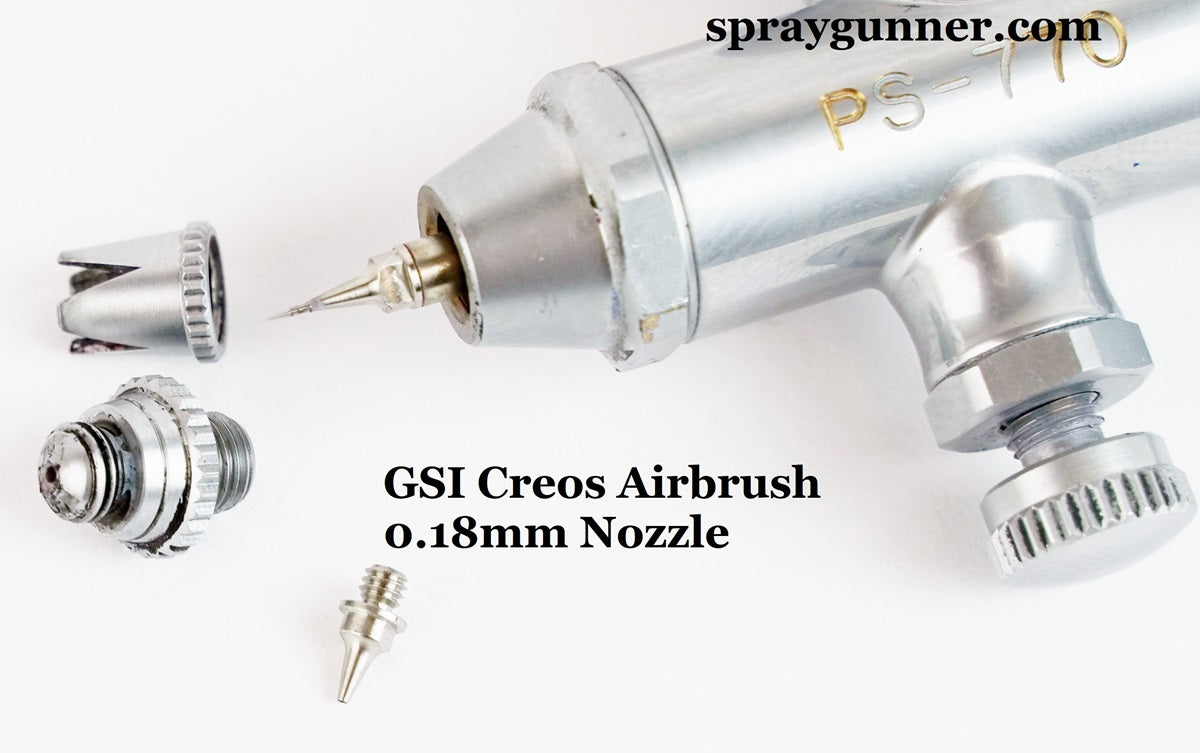
Connection Sizes
Finally, we have connection size. Historically, most brands don’t use a standard 1/8” threaded connection. There are two brands that are an exception to this rule. The Badger and Paasche both have their own connection sizes, and their airbrushes require an adapter to become compatible with the standard-sized hose and compressor. Always keep this in mind!
Always have an air hose included with your compressor or air brush.
This information covers all the basic types of airbrush and compressor styles. There are TONS of different accessories you could choose to add to your work tools, but make sure your setup is still comfortable.
Paint
Paint is another topic with a lot of details and even more options than airbrushes! We will happily consult you personally when it comes to paints.
Just keep in mind that paints have 2 classes:
- Water-based will work with almost any airbrush kit, and there is no smell.
- Solvent-based, which is easier to apply, comes with the cost of a strong smell and may not be the best fit for indoor use. Not all airbrushes are equipped to handle solvent-based paints. Cheap airbrushes from China will have difficulty passing these paints through their system.
Blog posts
Start Airbrush: Platform for Beginners to Kick-off Their Airbrush Journey
Step-by-Step Guide to Effectively Clean Your Airbrush
What is The Best Compressor for Airbrush?
